Text
You have to look at it separately, since there are two parts to that brand name, 天福 and 号/號. 天福 means "heavenly (good) fortune". The name doesn't really have a lot to do with their products (they sell braised meats and sauce preserved meats), but it does have a little to do with the brand's origin story, and has an auspicious meaning. 号 here is short for 字号/字號, which roughly means "store" or "brand". This is reflected in the title 中华老字号, which is a title that the Chinese government gave to stores/brands that have a long history behind them, whose products are culturally significant, and were made with traditional methods. The title officially translates to "China time-honored brands", of which 天福号 is one (est. 1738).
Here's the official logo for China time-honored brands. The design is basically an artistic combination of the characters 字 and 号 (Simplified version), and presented in a style similar to Seal script.

So altogether the name 天福号 should translate to "brand of heavenly fortune".
Random Stuff #12: What is Simplified Chinese?
For people like me who grew up speaking and using Chinese in day to day life, the vast majority of us have at least a basic understanding of what Simplified Chinese is, but it wasn’t until some days ago when an English speaker asked me “what is Simplified Chinese?” that I realized not many people here understand what Simplified Chinese is. So, I’ve gathered some misconceptions I’ve encountered both in real life and online, and I will try to answer them in a concise but factual manner.
But first, let us talk basics. There are three things we must cover first before going into this topic. The first is the fact that both Simplified Chinese (简体中文) and Traditional Chinese (繁體中文) used today are modern standardized systems of written Chinese, as in both were compiled within the past 100 years or so (modern Simplified from 1935-1936, then again from 1956 and on; modern Traditional starting from 1973), and the two currently widely used versions of both systems were officially standardized in the past 50 years (modern Simplified current version standardized in 2013; modern Traditional current version standardized in 1982). However, since simplified characters already exist in history (called 简化字/簡化字 or 俗体字/俗體字/”informal characters”), and “Traditional Chinese” can be taken to mean “written Chinese used in history”, in this post I will use “modern Simplified/Traditional Chinese” or “modern Simplified/Traditional” when referring to the currently used modern standardized systems.
Second is the evolution of written Chinese. Usually when this is taught, instructors use examples of how certain characters evolved over time, for example one might encounter a linear diagram like this in Chinese class:

(Original picture from Mandarinpedia)
However, this diagram only gives a very general idea of how characters evolved from more picture-like logograms to the more abstract symbols we call characters today, and does not reflect the complexity of this evolution at all. To get into these details we will need to talk about Chinese calligraphy. In terms of the evolution of written Chinese, Chinese calligraphy–all those scripts like oracle bone script (甲骨文), bronze/Jinwen script (金文), Seal/Zhuan script (篆书/篆書), Clerical/Li script (隶书/隸書), Regular/Kai script (楷书/楷書), etc–they aren’t just calligraphy fonts, but actually change the way characters are written, and are representative of the commonly used forms of written Chinese at different points in Chinese history, as in the appearance of a certain script on a historical artifact can actually be used to estimate how old the artifact is. Below is a (very) rough timeline of when each script appeared and when they are most popular:
Oracle bone script/Jiaguwen (甲骨文): Shang dynasty (~1600 BC-1046 BC)
Bronze/Jinwen script (金文; includes Large Seal script/大篆): Western Zhou dynasty (~1046 BC-771 BC)
Seal/Zhuan script (篆书/篆書; sometimes called Small Seal script/小篆 or Qin script/秦篆): compiled in Qin dynasty by chancellor Li Si/李斯 around 221 BC, was the official script in Qin dynasty (221 BC-207 AD); popularity went down after Qin dynasty but was still in use for ceremonial purposes like official seals (the archaic meaning of 篆 is “official seal”, hence the English name); still in use today in very specific areas like seal stamps, calligraphy, logos, and art.
Clerical/Li script (隶书/隸書): appeared in Qin dynasty, became the main script used in Han dynasty (202 BC-220 AD); popularity went down after Han dynasty but was still in use; still in use today in specific areas like calligraphy, inscriptions/signatures on traditional Chinese paintings, logos, and other art.
Regular/Kai script (楷书/楷書): appeared in late Han dynasty, became the main script used in Tang dynasty and has been popular ever since (618 AD-present).
(Note: there are other calligraphy scripts like Semi-Cursive script/行书/行書 and Cursive script/草书/草書 that were never mainstream yet were also significant, especially in the case of modern Simplified Chinese, but I will mention them later so this won’t become too confusing)
So if we plug the information from the very rough timeline above into the linear diagram, it becomes this:
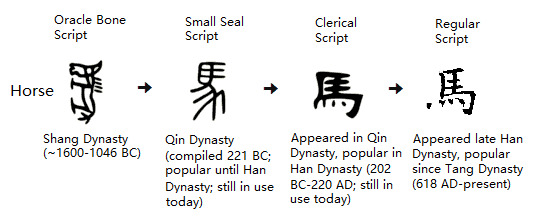
But wait! There’s even more! Because there is a thing called variant Chinese characters/异体字/異體字, which basically means that there have been multiple ways in which a character can be written (“one character, many forms”/一字多形), and these can come about as a result of homophones, personal preference of historically significant people, historical trends, mistakes in the past that stuck around, or the result of stylized scripts like Cursive script/草书/草書, which simplifies and connects strokes in a liberal manner. The reason Cursive script is important here is because of the logographic nature of written Chinese, meaning the simplifying or connecting of strokes actually changes how the character is written. Because of this, 马 and 馬 were forms that have already existed before modern Simplified and modern Traditional were compiled. A diagram that takes variations and evolution into account should look something like this:
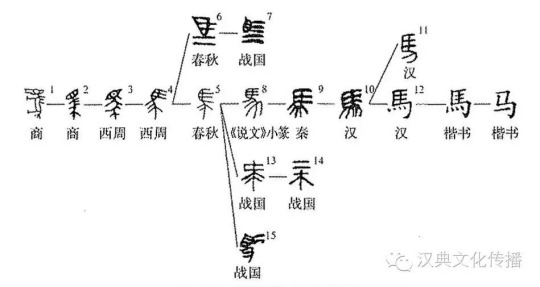
And since the above diagram did not take Cursive script into account, here’s another picture of a myriad of scripts/fonts (not in chronological order) that includes 馬 in Cursive script (mostly on bottom left):
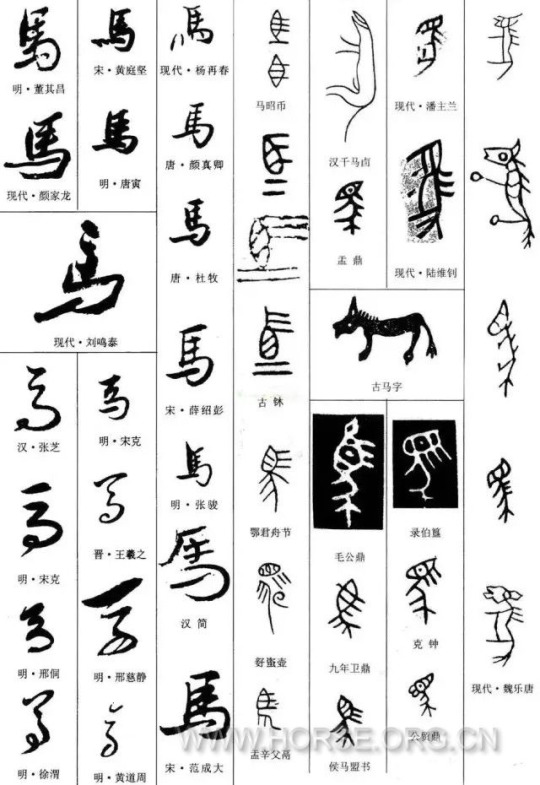
Now you may have an idea of where modern Simplified and Traditional Chinese came from: they are both compiled from existing variants. Since both modern Simplified and modern Traditional are supposed to be standardizations of written Chinese, they each set a single variant for each character as the “standard”. Modern Traditional Chinese kept the more historically mainstream 馬, and modern Simplified Chinese substituted it with the simpler variant 马. Taking all of this into account but still keeping it concise for our topic here, our linear diagram from the beginning should be modified to look like this:
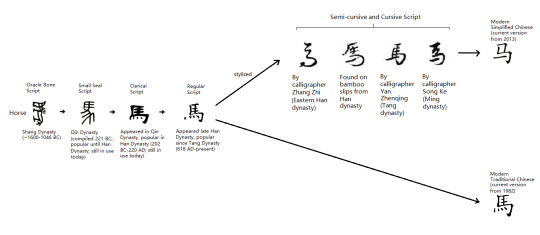
And that’s just an example of a single character. This evolution diagram can differ depending on the character too, due to there being other rules for simplifying characters. This is why standardizing written Chinese is an immense amount of work, but once standardized, the written language will be streamlined and much easier to use in communication.
Finally, we are ready to clear some misconceptions.
—————————————————
About Common Misconceptions Regarding Modern Simplified Chinese:
“Simplified Chinese replaced all Traditional Chinese characters”. Untrue. Modern Simplified Chinese only standardized 2274 of the most used Chinese characters and 14 radicals with simpler variants. That’s really all there is to it. For reference there are a total of about 60,000 Chinese characters, and about 3,500 of these are deemed to be often-used characters; so only ~3.7% of all Chinese characters and ~65% of often-used Chinese characters are simplified in modern Simplified Chinese. Play around with any online tool that can switch between modern Simplified and modern Traditional, and you will find that many characters stayed the same.
“Simplified Chinese is the opposite of Traditional Chinese”. Untrue. Modern Simplified Chinese is just a simplified and standardized system of written Chinese. Modern Simplified Chinese and modern Traditional Chinese are not “opposites” of each other at all, just different standardized systems serving different purposes. Modern Simplified was compiled with ease of use in mind, since Traditional characters can be time-consuming to write, for example imagine writing 聲 (sound) when you can just write 声 instead. Also back when Simplified was being introduced to the public, a huge part of the population was illiterate, especially farmers, poor people, and women, so Simplified Chinese was a great way to quickly educate them on reading and writing, and to improve efficiency in all aspects of life. Knowing how to read and write is key to education, and education is a must if people’s lives were to be improved at all.
“Simplified Chinese is Mandarin”. Untrue. Mandarin is a spoken dialect that came from Beijing dialect, and both modern Simplified and modern Traditional Chinese are modern standardized systems of written Chinese. One concerns the written language and the other concerns a spoken dialect.
“Simplified Chinese was invented by the Communist Party”. Untrue. As mentioned before, most characters used in modern Simplified Chinese are already present in ancient texts, artifacts, and inscriptions as variants. Apparently the only character simplified by PRC was 簾 (blinds/curtain), which became 帘 in modern Simplified Chinese. History wise, Republic of China was the first to start compiling Simplified Chinese in 1935 and introducing it to the public, but this was called off after 4 months. PRC modified and built on the original plan, and introduced it to the public again starting from 1956.
“Simplified Chinese is to Traditional Chinese as Newspeak is to English in 1984”. Completely untrue. Modern Simplified Chinese is just a simplified way to write commonly used Chinese characters and does not alter the meaning of the characters. There are some Traditional characters that are combined as one simplified character in modern Simplified, but the meanings are not lost or altered. For example, 發 fā (development) and 髪 fà (hair) are combined as 发 in modern Simplified, resulting in 发 having 2 different pronunciations (both fā and fà), and each of these pronunciations carrying their original meaning. The meaning of neither 發 nor 髪 was lost, 发 will just have a longer dictionary entry.
“Simplified Chinese is a huge change from Traditional Chinese”. Only partly true in that it is a change, but it is a change justified by the evolution of written Chinese throughout history. The origin of most modern Simplified Chinese characters come straight from history itself, since many characters had alternative ways in which they were written (sometimes for convenience), for example these characters below. Each row contains different forms of a single character (smaller characters indicate what time period these variants are from; ex: 汉碑 means the variant is from a Han dynasty inscription).
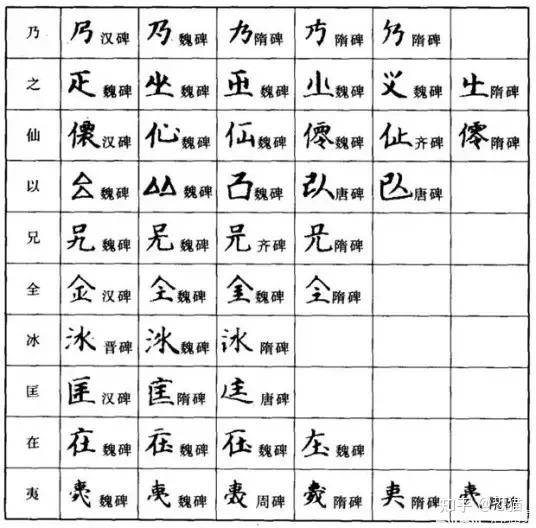
In reality, written Chinese has always been standardizing itself. Less-used variants become forgotten over time, sometimes only rediscovered through archaeology. Besides, effective written communication does partly rely on standardization of the written language (imagine everyone writing in the various variants…how horrible would that be?). Modern Simplified just took this one step farther and made some characters easier to write.
“Traditional Chinese is no longer used in Mainland China”. Untrue. Modern Simplified is the commonly used form in Mainland China, but Traditional is still used in a variety of places, such as on store signs/brand logos, particularly for stores/brand that are old. For example the old Beijing brand 天福号 below (est. 1738). On their logo, 天福号 is written as 天福號 from right to left, which is the traditional way of writing horizontally.
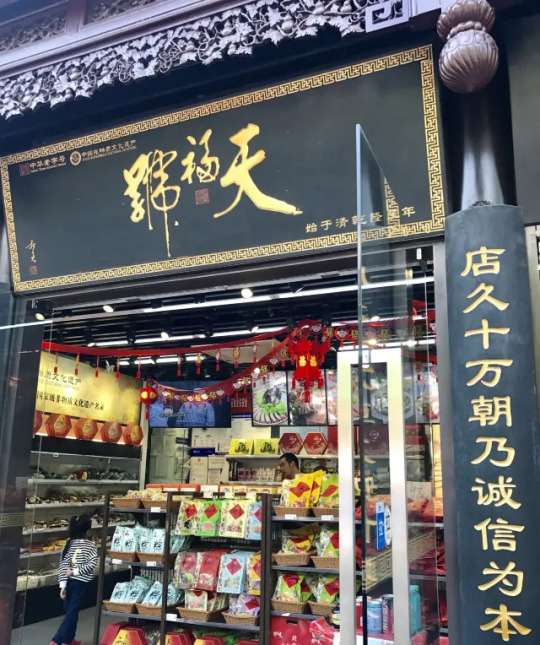
Traditional Chinese is also used in the logos for many universities in China:

Another way in which Traditional Chinese is commonly used in mainland China are personal seal stamps. Often times when people carve seal stamps for personal use (for example showing ownership on artwork they created or collected), they would put their name/courtesy name/nickname on the seal stamps in Zhuan/篆 calligraphy font, and Zhuan font use Traditional Chinese. Of course, the ways in which Traditional Chinese is still used in mainland China isn’t restricted to these two examples here. There are other places where Traditional Chinese is still used, such as traditional paintings/国画, calligraphy/书法, and many many more.
“People who grew up reading Simplified Chinese cannot read Traditional Chinese”. Depends on who you are asking. I grew up learning only modern Simplified, and I can read Traditional/modern Traditional Chinese just fine without having to actually learn it from anyone. Most people who grew up with Simplified Chinese should be able to read at least some Traditional without help. There are some people who say they can’t read Traditional without taking the time to learn it, but I doubt they’ve really tried, to be very honest.
—————————————————
And that’s it for the misconceptions!
My personal philosophy regarding modern Simplified Chinese and modern Traditional Chinese can be summed up as 识繁写简, or basically “know how to read Traditional and know how to write Simplified”. In a way, knowing how to read Traditional is a bit like knowing how to read cursive: a lot of history could be lost if we completely stopped using/learning about Traditional Chinese, but to meet the fast pace that modern life demands, I think modern Simplified Chinese is the more convenient choice for writing for day-to-day purposes. Since quite a few posts on this blog concern history, you will find that I usually use both Traditional Chinese and Simplified Chinese for historical things, since modern Traditional Chinese is closest to what people used in the past, and modern Simplified Chinese is more often used now. If it appears that I didn’t put modern Simplified and modern Traditional side by side, that usually means either the characters stayed the same and there’s no need for me to type the same thing out again, or the topic does not call for both to be shown.
Finally, the fun part. Here’s a Seal/Zhuan script calligraphy work by Mi Fu/米芾 (1051-1107):

Does something look familiar there?
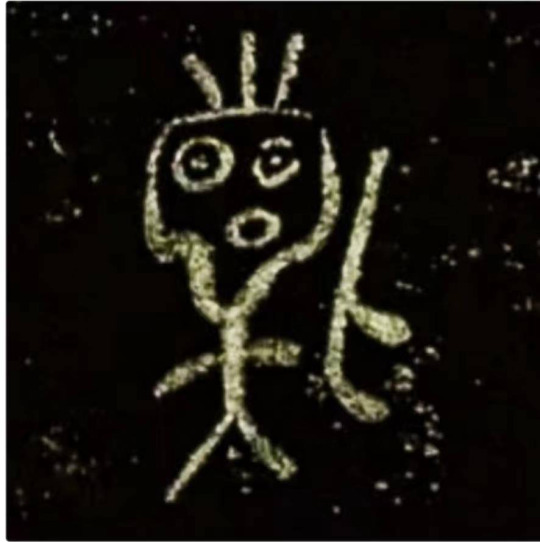
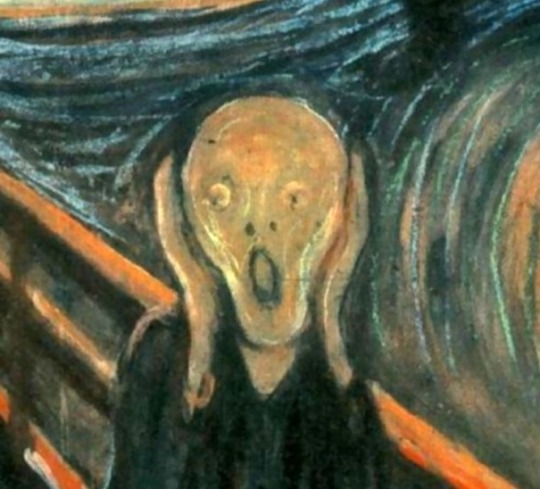
990 notes
·
View notes
Text
“How Often Does Such a Bright Moon Come Around?” (水調歌頭 · 明月幾時有) Translation
(Another year, another Mid-Autumn Festival, another poem translation. This particular poem is very famous because of the first and last lines, which are frequently referenced in popular culture. Happy Mid-Autumn Festival!)
How often does such a bright moon come around?
By Su Shi (Song dynasty, 1076 AD)
Mid-Autumn of the year Bingchen (2), drank all night in celebration, became heavily inebriated. Composed this poem to commemorate this occasion, and in dedication to Ziyou (3). (4)
How often does such a bright moon come around? With wine in hand, I ask the heavens.
Wondering what year it is for this day in heaven (5), in the palace high above.
Wishing to ascend on the wind, yet I cannot stand the chilly air around those lofty towers of jade.
Dancing and amused at my own crisp shadow, the frigid heavens surely cannot compare to the mortal realm below.
Rounding the vermilion building, hanging low near the intricate windows, the moon casts light over the sleepless (6).
The moon should not feel bitter jealousy, so why is it only full on parting?
Humans feel grief and joy, partings and reunions, just as the moon waxes and wanes.
For both of these heartening things (7) to happen together is very rare indeed.
May we be blessed with longevity, so that even when thousands of li (8) apart, we can still gaze upon this wonderful moon together.
—————————-
Notes:
This poem is in the Ci/词 format, and follows the rhyme scheme (Cipai/词牌) called Shuidiaogetou/水調歌頭/水调歌头.
Bingchen/丙辰 is a year in the Chinese Sexagenary Cycle, which is known in Chinese as Tiangandizhi/天干地支 ("Heavenly Stems and Earthly Branches") or simply Ganzhi/干支 ("Stems and Branches"), and is used to record time. This system has been in use since at least the Shang dynasty around 3000 years ago (oracle bone artifact bearing inscriptions of ganzhi has been found at Yinxu/殷墟, the archaeological site of the ancient capital of Shang dynasty; however, during Shang dynasty the Ganzhi system was used to track days and not years, unlike how it has been used in later times). Because there are 60 years in one cycle, it is possible to trace back to specific years. In this case, Bingchen would be exactly 1076 AD.
Ziyou/子由 is the courtesy name of Su Shi's brother, Su Zhe/蘇轍.
This section is a short introduction to the poem, which begins after this section.
This may be a reference to the concept that "a day in heaven is a year on earth" ("天上一天,地上一年"; famously included in Journey to the West), which in turn is a reference to the ecliptic plane (called Huangdao/黄道 in Chinese), since for an observer on Earth, the Sun appears to move in an elliptical path throughout the year. This means that it takes a year (i.e. "a year on earth") for the Sun to "complete" one round in this elliptical path (i.e. "a day in heaven").
Here, "the sleepless" is a reference to the poet himself.
"Both of these heartening things" refers to reunion with family and/or friend, and the occurence of a full moon.
Li/里 is a traditional unit of distance. During Su Shi's time (Northern Song dynasty, 960 AD - 1279 AD), 1 Li ≈ 576 meters = 0.576 km or 0.36 miles (Note: link leads to pdf).
—————————-
Original Text (Traditional Chinese):
《 水調歌頭 (1) · 明月幾時有 》
[宋] 蘇軾
丙辰中秋,歡飲達旦,大醉,作此篇,兼懷子由。
明月幾時有?把酒問青天。不知天上宮闕,今夕是何年。
我欲乘風歸去,惟恐瓊樓玉宇,高處不勝寒。起舞弄清影,何似在人間。
轉朱閣,低綺戶,照無眠。不應有恨,何事長向別時圓?
人有悲歡離合,月有陰晴圓缺,此事古難全。但願人長久,千里共嬋娟。
#mid autumn festival#midautumnfestival#chinese poem#poetry#how often does such a bright moon come around#my translation#明月几时有#苏轼
170 notes
·
View notes
Text
Random Stuff #14: Cats in China--History (Part 2)
(Link to Part 1)
(Warning: Very long post ahead with multiple pictures!)
Cats Becoming Pets
In the book Dreams of Splendor of the Eastern Capital (《 東京夢華錄 》), a memoir by Meng Yuanlao/孟元老 about life in the then “Eastern Capital” or Bianliang/汴梁 (today known as Kaifeng/开封, located in Henan province) in Northern Song dynasty (960 - 1127 AD), there was a section called “Miscellaneous Goods”, which revealed that there were special street vendors who sold horse feed, dog food, and of course, cat food and cat treats:
“If you kept horses, there were two people who sold hay daily; if you kept dogs, there were dog food being sold; if you kept cats then there were cat food and small fish”. (“若養馬,則有兩人日供切草;養犬則供餳糟;養貓則供貓食並小魚”)
Another book that shed light on this change in more concrete terms is Fleeting Dreams of Splendor (《夢粱錄》)--which as you can probably guess from the title, is a memoir modeled after Dreams of Splendor of the Eastern Capital, this time about life in Southern Song dynasty (1127 - 1279 AD) capital city Lin’an/臨安 (today known as Hangzhou/杭州, located in Zhejiang province). In the book it was mentioned that people in the capital kept white or yellow long haired cats, called “lion cats”/獅貓, which couldn’t catch mice and were only kept for their looks, or in other words, these cats had become actual pets:
“People of the capital kept cats to catch mice, and the cats have long hair. Those that were white or yellow were called ‘lion cats’, these cats could not catch mice and were kept because they looked beautiful”. (“貓,都人畜之捕鼠,有長毛。白黃色者稱曰「獅貓」,不能捕鼠,以為美觀”)
During Song dynasty, folk customs also developed around cat adoption. Cat adoption, called pin/聘 or na/納, was treated like a “wedding” of sorts, complete with a “bride price” and a “marriage certificate” contract/契. The “bride price”, of course, was paid to the family that the cat came from, and usually took the form of some salt (this act is called ”bringing salt”/裹鹽; historically salt is a valuable commodity) or some small fish skewered on a willow branch (called “buying fish and skewering with willow”/買魚穿柳 or simply “skewer of willow”/穿柳). The contract, however, had quite a mysterious air about it and vaguely resembled a Daoist talisman:

^ Template of a cat contract, from Yuan-era (1271 - 1368 AD) book Newly Published Reference on Ying Yang and Selection of Dates/《新刊陰陽寶鑑剋擇通書》. Top says “Cat Contract”/貓兒契式. Content consists of a drawn picture of the cat in question at the center, and the terms of the contract written in a counterclockwise order that spiraled outwards from the picture of the cat, which read:
“A cat is Black Spots¹, it used to live before the bodhisattvas of the West, Sanzang² brought it home with him, and it has since been protecting Buddhist scriptures among the people. The Offeror is Moujia³ , who is selling (this cat) to a certain neighbor. All three parties⁴ has agreed upon the price of __, so __ will be returned as the contract finalizes. May the Offerer become as wealthy as Shi Chong⁵, and as long-lived as Peng Zu⁶. (From now on, the cat) Must patrol the grain storage diligently, and must catch rat thieves without slack. (The cat) Must not harm the chickens and other livestocks, and must not steal any sort of food. (The cat) Must guard the home day and night, and must not wander to the east or west. If (the cat) breaks these terms and wanders off, it shall be punished in the courtyard. __ year __ month __ day, Offeror __.”
The foot of the contract read:
”To evaluate a good tabby cat: there must be stripes on the body, and the stripes on the limbs and tail must be just right”⁷
“King Father of the East⁸ see to it that (this cat) does not wander south”
“Queen Mother of the West⁸ see to it that (this cat) does not wander north”
“Received on a day blessed by the Eminent Benefactor of Heavenly Virtues and Eminent Benefactor of Lunar Virtues⁹”
“Returned on a day blessed by the Eminent Benefactor of Heavenly Virtues and Eminent Benefactor of Lunar Virtues”
Notes:
“Black Spots”/黑斑: placeholder cat name.
Sanzang/三藏 refers to Xuanzang/玄奘, as in the real life inspiration of the character Tang Sanzang/唐三藏 in Journey to the West. It was widely believed that domestic cats had came to China from India with traveling Buddhist monks, and that they were protecting the scriptures from damage by rodents.
“Moujia”/某甲: placeholder human name.
“Three parties”: Offeror, Offeree, and Witness.
Shi Chong/石崇 was an extremely wealthy official during Western Jin dynasty (266 - 316 AD) who loved to compete with others over who was the wealthiest.
Peng Zu/彭祖 is a figure in legend and a Daoist immortal who had lived for 700 years according to legend.)
This is part of the practice of evaluating cats based on looks, called xiangmao/相貓.
King Father of the East/東王公 and Queen Mother of the West/西王母 are gods of Yang and Yin respectively.
Eminent Benefactor of Heavenly Virtues/天德貴人 and Eminent Benefactor of Lunar Virtues/月德貴人 are deities representing celestial objects, and are part of the Four Pillars of Destiny/四柱命理 concept in Chinese astrology, where basically different days and times are presided over by different celestial objects and therefore different gods. A day that is blessed by both of the aforementioned Eminent Benefactors is considered to be a very auspicious day.
As a cat owner, I could most definitely feel the helplessness and desperation emanating from this contract. Invoking deities in the hopes that the cat will do its job, not destroy stuff, and not simply run away......I’m sure many cat owners throughout the ages and across the world could sympathize with this sentiment. The special emphasis that was placed on keeping the cat from running away was probably because back then, people lived in residences that consisted of buildings surrounding a courtyard in the middle (for example, a siheyuan/四合院), so it was extremely easy for cats to run out of the residence and become lost.
Anyways......back to history.
Song-era poets wrote many poems about cats, and both Song-era and Yuan-era painters painted many works about cats (which I will cover in my next posts!). At the same time, cats were painted in Song-era tomb murals along with sparrows as a sign of longevity, since cats are māo/猫 and sparrows are què/雀, and when said together they sound like the word mào qí/耄耆, which means “elderly people”.
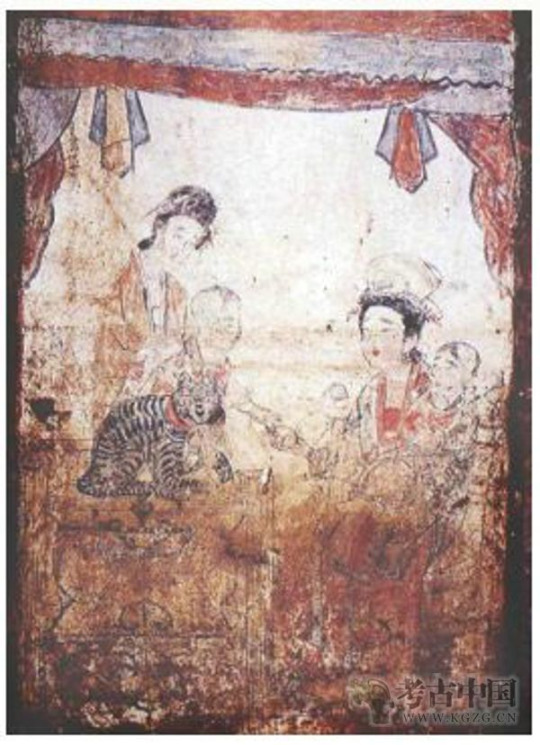
^ Tomb mural depicting a tabby cat with a sparrow in its mouth. From a Northern Song-era tomb discovered in Dengfeng, Henan.
Ming dynasty (1368 - 1644 AD) emperors were also big-time cat lovers. Of note were Emperor Xuanzong of Ming/明宣宗 (personal name Zhu Zhanji/朱瞻基), who painted cats, and Emperor Shizong of Ming/明世宗 (better known as Jiajing Emperor/嘉靖帝), who reportedly loved his cat Frosty Brows/霜眉/Shuangmei (I swear this name sounds a lot more artsy in Chinese) so much that he bestowed the title of Qiulong/虯龍 (note: Qiulong is a type of Chinese dragon that is either defined as horned or hornless depending on the source) upon it, and when Frosty Brows died, he ordered a tomb be constructed just for his cat, then ordered high-ranking officials to write eulogies for Frosty Brows:
“During Jiajing Emperor’s reign, there was a cat in the palace whose fur was slightly blue-ish except the glowing white brows, so it was named ‘Frosty Brows’. This cat understood His Majesty well, and when His Majesty went somewhere in the palace or visited a consort, it would walk ahead and lead the way. While His Majesty slept, it would stay nearby. His Majesty adored it the most. When it died, His Majesty ordered it be laid to rest at the shady side of Mt. Wansui (today called Jingshan/景山), and a stone stele was to be erected marking its grave as ‘The Grave of Qiulong’”. (嘉靖中,禁中有貓,微青色,惟雙眉瑩潔,名曰“霜眉”。善伺上意,凡有呼召或有行幸,皆先意前導。伺上寢,株橛不移。上最憐愛之。後死,敕葬萬歲山陰,碑曰‘虯龍塚’)
-- Old Rumors Under the Sun, “Within the Palace of Ming Part 3″/《日下舊聞考·宮室·明三》
“Later when a lion cat of the Palace of Eternal Longevity died, His Majesty grieved and ordered it be laid to rest at the shady side of Mt. Wansui in a coffin of gold, then ordered the senior officials to write eulogies and a funeral ritual be done, so the cat’s soul may achieve transcendence. However because the prompt seemed awkward, most of the senior officials could not perform at their usual levels, only the Scholar of Rites Yuan Weiwen came up with such words as ‘the lion metamorphosed into a dragon’, which delighted His Majesty”. (“最後西苑永壽宮有獅貓死,上痛惜之,為製金棺葬之萬壽山之麓,又命在直諸老為文,薦度超升。俱以題窘不能發揮,惟禮侍學士袁煒文中有「化獅成龍」等語,最愜聖意”)
-- Compiled Rumors of Wanli Era, Chapter 2/《萬曆野獲編·卷二》

^ A Nebelung cat (image source). According to the description above, Frosty Brows probably looked like this cat but with white markings above the eyes. RIP Frosty Brows, you shall be remembered.
Of course, Frosty Brows wasn’t the only pet cat in the palace. According to Moderate Records/《酌中志》, a book that’s mostly about life in Ming-era imperial palace (which is the same as the Palace Museum today), there was a special place called the “House of Cats”/貓兒房 that employed 3-4 servants just to take care of the cats that were favored by the emperor. These cats even had titles and nicknames: un-neutered male cats were called xiaosi/“小廝”/”lads”, neutered male cats were called laoye/”老爺”/“old men”, female cats were called yatou/”丫頭“/”gals”, and cats with titles were called maoguanshi/”貓管事”/“cat butlers” .
Speaking of royal kitties that left their names in history, Emperor Qianlong (1711 - 1799 AD) of Qing dynasty commissioned a series of paintings of his cats from the court painter and Jesuit missionary Ignatius Sichelbart (also known by his Chinese name 艾啟蒙/Ai Qimeng), and this series of 10 paintings were collectively known as 《貍奴影》, or “Cat Images” (li/“貍” or linu/“貍奴” are both archaic names for cats). Here is a Douyin video of these 10 paintings and the names of these 10 royal felines, translation courtesy of @rongzhi.
The Ins and Outs of Feline Ownership
By Qing dynasty (1636 - 1912 AD), there were two encyclopedia-like books specifically about cats, called The Compendium About Cats/《貓苑》 and The History of Cats/《貓乘》 respectively, which were extensive compilations of records and mentions of cats from older texts, including everything from folktales about cats to cat behavior to how to take care of cats, which served as guides for new cat owners back then. Although cat owners today have much more reliable and scientific sources on how to take care of cats (***Please keep in mind: this post is for fun! If you have any questions regarding the health of your cat, please ask your local veterinarian!***), books like these still provide an interesting glimpse into how cat owners of old went about taking care of their cats. Here I will be presenting a few passages from The Compendium About Cats/《貓苑》 that I found to be pretty cool or interesting:
How people used to bring cats back home and litter train them:
“The way to adopt cats: use a dou¹ or a bucket, and carry it in a cloth sack. Once you reach the home of the previous owner, ask them for a single chopstick, then put both cat and chopstick in the bucket inside the sack to bring them back home. Should you encounter potholes on the way back, you must fill the pothole with rocks before passing over it. Upon arriving back home, take the cat along to worship the household stove god and greet the resident dog. When you are done, take the chopstick and stick it in a mound of dirt in the yard, then tell the cat to never urinate or defecate inside, but still allow the cat to sleep on the bed. This way the cat will not run away”. (“納貓法,用斗或桶,盛以布袋,至家討著一棍,和貓盛桶中攜回。路遇溝缺,須填石以過,使不過家,從吉方歸。取貓拜堂灶及犬畢,將箸橫插於土堆上,令不在家撒屎,仍使上床睡,便不走徃”)
How people thought neutering changed behavior:
“Male cats must be neutered to blunt its might, so their toughness may be softened, and they will soon become plump and friendly”. (“公貓必閹殺其雄氣,化剛為柔,日見肥善“)
What to feed cats and what not to feed cats:
“Cats will grow sturdy when fed eel, and will grow plump when fed pork liver. However if cats are fed too much meat broth, it will give them intestinal issues”. (“猫食鳝则壮,食猪肝则肥,多食肉汤则坏肠”)
“Catnip”:
“Cats will become inebriated after eating mint²”... “Mint is the alcohol of cats, as such the leaves are fresh and relaxing”. (“貓食薄荷則醉”...“貓以薄荷為酒,故葉清逸”)
Treatment for fleas:
“When a cat has fleas, mash up peach tree leaves and chinaberry tree roots, boil the paste into a warm brew and bathe the cat in it to kill the fleas; otherwise rubbing camphor tree shavings over the cat also works”. (“貓生虱,桃葉與楝樹根搗爛,熱湯泡洗,虱皆死,樟腦末擦之亦可”)
Notes:
Dou/斗 (here pronounced dǒu), was historically a type of container that was originally for wine, and then became an apparatus used to measure volume (particularly for grains), so dou also doubled as a unit of volume. This unit of volume can be traced back to at least the Warring States period (770 - 221 BC), but is considered archaic today and could only be found in chengyu and other sayings that originated in history (ex: 升斗小民, “sheng and dou commoners”; since both sheng and dou are relatively small units of volume that ordinary people used in day-to-day life, this chengyu was and is still used to imply “ordinary people”).
“Mint” or “薄荷” here is likely just a species of mint. However, catnip (Nepeta cataria) is a member of the mint family, and its native range seems to span much of Eurasia, including parts of China, so it’s unclear exactly which member of the mint family this text is referring to.
Cats in the Age of the Internet
Thanks to scientific and technological advances, many people no longer adopt cats to keep rodents away, but keep them solely as companions. However, being our feline overlords, cats require a lot of affection, attention, service, and commitment from their humans, thus giving rise to the playfully self-mocking terms of "official(s) of poop-scooping”/铲屎官/chanshiguan and “slave(s) of cat(s)”/猫奴/maonu, while cats are called “cat master(s)”/猫主子/maozhuzi due to their seemingly volatile moods and behavior. People even imagined that cats were aliens from another planet called the “Planet Meow”/“喵星” who came to Earth to conquer humans with their cute appearance, thus giving rise to the term “Meowish”/“喵星人”, meaning “inhabitant of Planet Meow”. A cat who raises its hind leg up straight to lick its backside is described as “sending signals back to the mother planet (Planet Meow)”, and a common euphemism for a cat passing away is “(the cat) has returned to Planet Meow”.
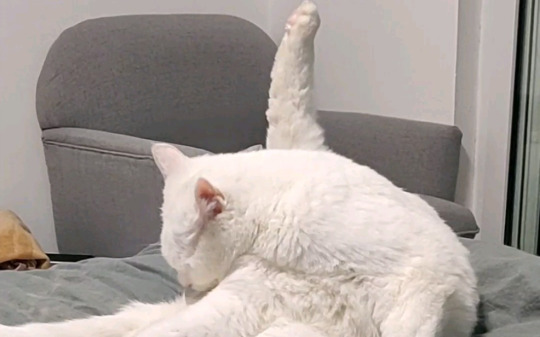
^ An inhabitant of Planet Meow sending signals back to its mother planet.
Another common internet slang for the act of kissing, sniffing, or hugging a cat out of adoration is “sniffing cat”/“吸猫”/ximao. As some might notice, the term subtly and playfully draws a parallel between the addictive aspect of cuddling with a cat and the addictiveness of illicit drugs. Finally, because 喵 (miāo), the character for “meow”, is a homophone of 妙 (miào), the character that can mean “great”, on videos where there are cats meowing clearly, you can see barrage comments from many people asking questions like “how is my exam going to go” or “how is my job interview going to go”, as a playful way of wishing for things to go smoothly in the near future.
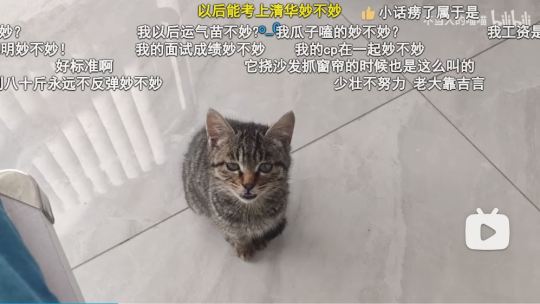
^ Some examples of these barrage comments, with people asking “how is my job interview score”, “how is my luck in the future”, “am I going to be accepted into Tsinghua University”. Video from Bilibili.
And that is all for the history of cats in China! In Part 3 and Part 4 I will cover famous paintings about cats and poems of cats, and these posts will be coming out within the next two weeks, stay tuned!
294 notes
·
View notes
Text
Random Stuff #13: Cats in China--History (Part 1)
(Warning: Very long post ahead with multiple pictures!)
(Link to Part 2)
Since this topic is pretty big, I will split the content across 4 posts, but even then these posts will only be a shallow summary of the subject.
This small series of posts is dedicated to my fluffy quadrupedal friend, 小葱 (Little Green Onion).
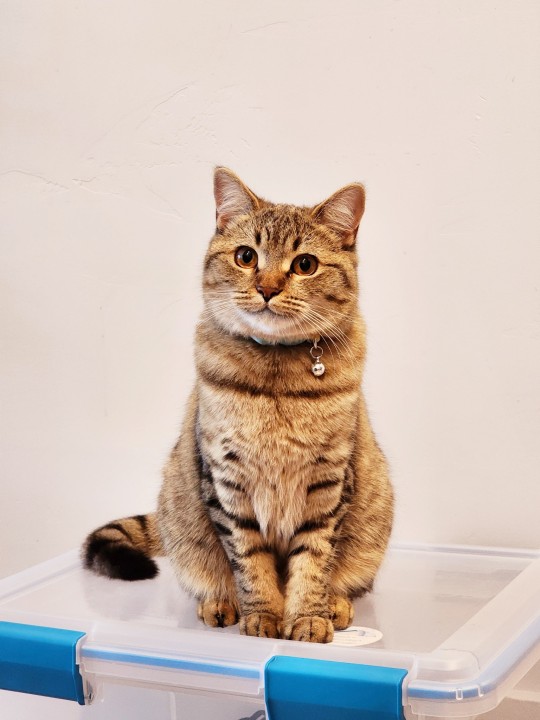
-------------------------------------------------
Did you know that there are over 200 cats in the Palace Museum/故宫博物院 in Beijing? Some of these cats were descendants of the pet cats of the imperial family hundreds of years ago, and some of these cats were simply strays, but they all found a home in the Palace Museum, and are now being fed and taken care of by the museum employees. You may even catch a glimpse of one of these cats during a visit to the museum.
Here are two of these cats, Jixiang/吉祥 (right; name means “auspicious”) and Ruyi/如意 (left; name means “(may things go) according to (one’s) wishes”)

Speaking of the Old Palace and royal kitties, cats actually have a fairly long history of being mousers and human companions in China, and sometimes they were even seen as powerful spirits to be both worshipped and feared.
Cats As Guardian Spirits
According to archaeological evidence, in China, cats came into people’s lives as early as 5300 years ago (~3300 BC). People of the Neolithic Yangshao Culture/仰韶文化 (~5000 - 3000 BC) in what is now central China grew millet, rice, and vegetables. These crops were bound to attract small rodents like mice and rats to human villages, which attracted wild cats in turn. There were no evidence showing that these wild cats had any sort of special or intimate bond with humans yet, so the relationship was likely a simple mutualistic relationship in which cats benefitted from having a steady source of prey, while humans benefitted from having their harvest protected from rodents. In the Book of Rites/《禮記》, a book detailing Zhou dynasty (1046 - 256 BC) etiquettes, administration, and ceremonial rites, there was a passage on the religious aspect of this mutualistic relationship:
“The wise and gentle rulers of yore will always repay the good deeds that others have done for them. Welcome the cats, for they are hunters of mice; welcome the tigers, for they are hunters of boars; welcome them and worship them”. (“古之君子,使之必報之。迎貓,為其食田鼠也;迎虎,為其食田豕也,迎而祭之也 。”)
-- Book of Rites, The Great Suburban Sacrificial Rites chapter (《禮記·郊特牲》).
As we can see in this short passage, people in ancient China regarded cats as spiritual beings--one of eight important animal spirits worshipped in the great ritual at the end of the year that must be performed by the ruler--and made offerings to them as a way to thank them for controlling rodent populations in the fields and protecting the year’s harvest.
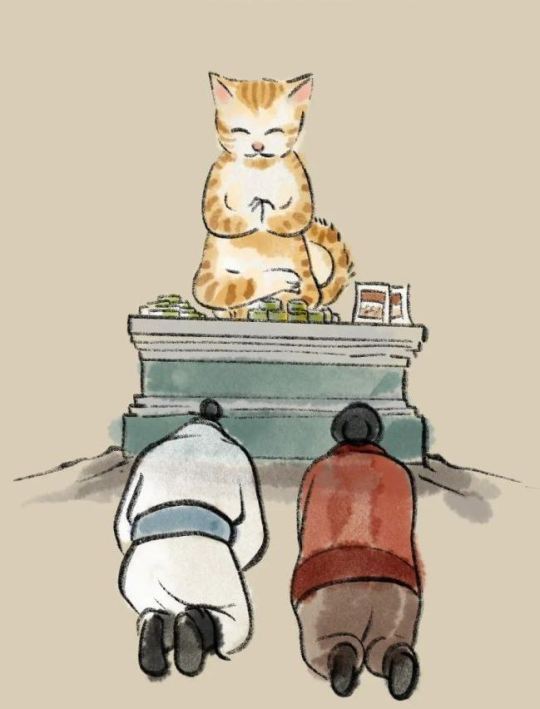
^ Illustration by 国馆 on Zhihu.
Cats as Evil Ghosts
In ancient folk belief, however, cats eventually became associated with wugu/巫蛊, which can be generally understood as “witchcraft” or “black magic”. Practitioners would sacrifice cats and keep “cat ghosts”/猫鬼, then send them out to curse whoever they wish to harm and steal money from. There was one famous case of this during Sui dynasty (581 - 618 AD) that was recorded in Book of Sui /《隋書》, the traditional official historical records of Sui dynasty that was completed in 636 AD. As the chapter “Consort Kin” (《隋書·外戚》) described, when Empress Dugu and Head of Secretariat Yang Su’s wife fell ill, the doctors diagnosed their illnesses as “caused by cat ghosts”. Emperor Wen of Sui/隋文帝 (personal name Yang Jian/楊堅) assumed that Dugu Tuo/獨孤陀 was behind the mysterious illnesses since Dugu Tuo was the paternal half-brother of Empress Dugu and his wife was the paternal half-sister of Yang Su, but Dugu Tuo denied having anything to do with it. So his household was questioned, and finally one of his housemaids confessed to be a practitioner of “witchcraft” and that she had cursed Empress Dugu and Yang Su’s family with her cat ghost under orders from Dugu Tuo. Dugu Tuo was stripped of all his titles along with his wife, and both were demoted to commoner status. So as we can see it was big enough in folk belief that it actually made its way into some imperial family drama. After this event, Emperor Wen of Sui declared a ban on these practices that were meant to cause harm to others.

^ A modern illustration of a “Cat ghost”, from the work titled Hundred Ghosts of China/《中国百鬼录》.
Cats in Analogies and Folklore
Cats have also been used in the classic cat-and-mouse analogies in different situations. During Wu Zetian/武則天’s ascent to power in Tang dynasty in 655 AD, she was involved in a power struggle with Empress Wang and Consort Xiao, and after some back-and-forths, Empress Wang and Consort Xiao were demoted to commoner status and imprisoned. Consort Xiao then cursed Wu Zetian, saying:
“May you become a mouse and I a cat, so I can choke you!” (”願阿武為老鼠,吾作貓兒,生生扼其喉!”)
-- Old Book of Tang, ”Empresses and Consorts Part 1”/《舊唐書· 后妃上》
Apparently after this happened, Wu Zetian banned cats from the palace out of fear.
Another example of this cat-and-mouse analogy was the memorial Su Shi/蘇軾 submitted to Emperor Shenzong of Song/宋神宗 (personal name Zhao Xu/趙頊) that argued against the parts of the reform proposed by Wang Anshi/王安石. This memorial was preserved and later named《上神宗皇帝書》. In it, Su Shi argued that government officials must be able to freely object another official’s proposal in order to prevent treacherous officials from gaining too much power with this analogy:
“We keep cats in order to keep mice at bay, but we cannot keep cats who can’t catch mice just because there are no mice around; we keep dogs in order to keep burglars away from our homes, but we cannot keep dogs that don’t bark just because there are no burglars around”. (”然而養貓所以去鼠,不可以無鼠而養不捕之貓。畜狗所以防奸,不可以無奸而畜不吠之狗”)
There weren’t only cat-and-mouse analogies, however. There's a short fable about cats and tigers that was passed down through the generations from at least Song dynasty all the way to the present day. Even I have heard of this story as a child. In this fable, the tiger was initially very clumsy, so the tiger asked a cat to teach it how to hunt. The cat agreed and taught the tiger how to track down, stalk, pounce, and play with prey, but refrained from teaching the tiger about tree-climbing. The tiger eventually mastered the art of hunting, and one day the tiger turned on its teacher, the cat, who then climbed atop a tree to save its own life. The moral of the story was either “never teach others everything you know, in case they use your knowledge against you”, or “never teach those who are ungrateful”, which resulted in the xiehouyu/歇后语 (a type of Chinese proverb) “cat teaching the tiger -- withhold some of your abilities” (“猫教老虎--留一手”). Of course, this fable doesn’t really stand in terms of scientific accuracy, seeing as tigers are proficient tree-climbers themselves, but the fable itself is still very interesting nonetheless. Although the origin of this fable has now faded into obscurity, the earliest record I could find was from the self-annotation on the poem “Mocking the Cats”/《嘲畜貓》 by the famous Song-era poet Lu You/陸游 in 1198 AD, which showed that this fable was already popular in folk culture in Southern Song dynasty:
“In folk belief cats were the uncles of tigers, they taught the tigers everything except how to climb trees”. (“俗言貓為虎舅,教虎百為惟不教上樹”)

^ Modern illustration of the fable, from children’s book The Tiger and the Cat by Eitaro Oshima.
Historical texts showed that at least from Southern and Northern dynasties (420 - 589 AD) and on, most people kept cats for their ability to catch mice, and oftentimes keeping cats as just house pets was something that was still limited to royalty, nobility, and rich people. But as we would see in Part 2, there were evidence from Song dynasty that showed a definite change in how cats were viewed in the ordinary household.
(Part 2 Here!)
247 notes
·
View notes
Text
“Three Poems for the End of the Year” (歲晚三首) Translation
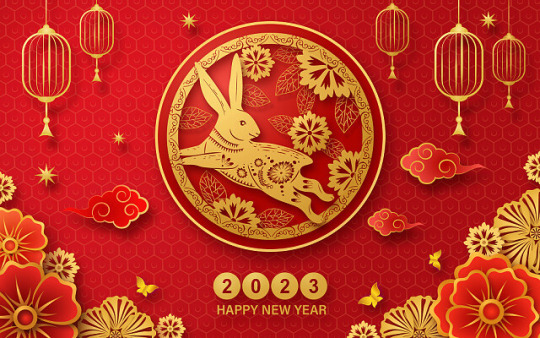
(Happy Spring Festival/Lunar New Year/Chinese New Year to all! I thought this series of poems was a good introduction for certain traditions and customs surrounding the festival, so here they are, please enjoy!)
Three Poems for the End of the Year
By Su Shi (Song dynasty, 1062 AD, 11th century)
Exchanging gifts at the end of the year is called “gifting the year” (1); inviting others to feast together is called “sending off the year” (2); keeping vigil through the night of the eve is called “watching over the year” (3). Such are the customs in Shu (4) (5). Since I am now a government official in Qixia (6) and cannot return home at the end of the year, I am writing these three poems here for Ziyou (7).
Gifting the Year (1)
Each household’s harvest is now done, which will aid in the yearly event (8).
Worried about missing out on the festivities, people exchange presents freely.
The contents vary according to their place of origin, the poor gives little while the rich gives plenty.
An enormous carp lays across the plate, within the cage rests a pair of rabbits.
The wealthy displays extravagance, their embroidered silks glowing in lustrous hues.
The poor cannot afford the luxury, and opted for small gifts of pastries.
The official residence doesn’t have familiar faces, while the celebrations continued in the alleys.
I wish to celebrate with the customs of my hometown, yet there's nobody who will join me.
Sending Off the Year (2)
Faraway lives my old friend, reluctantly do we part.
Though people can return to visit, the years never will.
Where have the years gone? To the ends of the earth.
Off chasing the east-flowing waters (9), and into the timeless seas.
The neighbor to the east has the well-aged wine, and the neighbor to the west owns the fattened pig.
All for a day’s festivity, to compensate for the melancholy of the ending old year.
But never be consumed while mourning this loss, lest you forgo the fresh new year.
If one looks back while moving forward, old age and infirmity shall catch up.
Watching Over the Year (3)
The year shall soon end, a long snake swimming towards the gloomy depths.
Its slender scales already half out of view, who can hide its intention to leave?
And if one wishes to tie up its tail, though diligent this is still in vain.
Trying their best to fight off sleep, children play merrily into the night.
Wishing the morning rooster won’t crow, my anxiety grows amid the urging of the geng drums (10) (11).
Sitting through the night whilst petals of ash drifts from the lamp (12), the Big Dipper already askew when I stand up.
Will the New Year be absent next year? I fear what’s on my mind will be delayed again.
The youth who can cherish this singular night, their will and spirit are praiseworthy indeed.
—————————-
Notes:
“Gifting the Year”/饋歲/馈岁: refers to the custom of exchanging gifts at the end of the year.
“Sending Off the Year”/別歲/别岁: refers to the custom of feasting on the 29th day of the Twelfth month in order to “bid farewell to the old year”.
“Watching Over the Year”/守歲/守岁: refers to the custom of staying up through the entire night of the eve and the early hours of the first day of the new year; lamps and candles are also kept on or lit through the night so the light can rid the residence of all evil, pestilence, and illness in preparation for the new year.
Shu/蜀: name of a region; the archaic name of the region known today as Sichuan/四川.
The first two sentences in Su Shi’s introduction here are a direct reference to the records of New Year’s customs from the Jin dynasty (266 - 420 AD) book 《風土記》 by Zhou Chu/周處/周处. In fact, Su Shi’s description here is a paraphrase of the same information in 《風土記》: ”蜀之風俗,晚歲相與餽問,謂之餽歲。酒食相邀為別歲。至除夕,達旦不眠,謂之守歲”.
Qixia/岐下: refers to the foot of the Qishan/岐山 mountain in Shaanxi province/陕西省 today.
Ziyou/子由: courtesy name of Su Shi’s younger brother Su Zhe/蘇轍, the recipient of this letter.
Yearly event/歲事: implies the New Year’s festival, colloquially called “passing the year” (Guonian/過年/过年 or Dusui/度歲/度岁) or “yearly festival” (Nianjie/年節/年节), now known more widely as “Spring Festival”/春节 (this name came about in 1914 from an official document), “Lunar New Year”/农历新年, or “Chinese New Year”.
East-flowing waters: a common Chinese literary motif that refers to the passage of time; this is because both Yangzi River and Yellow River flow eastwards.
Geng drum: a drum carried by night watchers, called Gengfu/更夫; gengfu will sound the drum every Shichen/時辰/时辰 (1 shichen = 2 hours) during the night while he is patrolling the streets and on the look out for potential dangers like fires or robbers.
It should be noted that in the old times, age is calculated as “1 year old” at birth, and increases by 1 every New Year’s festival (the resulting age number from this traditional age calculation method is now called Xusui/虛歲/虚岁). This is reflected in the character sui/歲/岁, which means both “age” and “year”. This also means that in the old times, everyone has a birthdate, but there are no annual “birthdays”. Now we can understand Su Shi’s anxiety while waiting for the old year to end: he will be considered “1 year older” after the eve ends, which reminds him that he’s aging.
Petals of ash: refers to the ash left by the burning candle wick.
—————————-
Original Text (Traditional Chinese):
《 歲晚三首 》
[宋] 蘇軾
歲晚相與餽問為“餽歲”;酒食相邀呼為“別歲”;至除夜達旦不眠為“守歲”。蜀之風俗如是。餘官於岐下,歲暮思歸而不可得,故為此三詩以寄子由。
《 饋歲 》
農功各已收,歲事得相佐。
為歡恐無及,假物不論貨。
山川隨出產,貧富稱小大。
置盤巨鯉橫,發籠雙兔卧。
富人事華靡,彩繡光翻座。
貧者愧不能,微摯出舂磨。
官居故人少,里巷佳節過。
亦欲舉鄉風,獨唱無人和。
《 別歲 》
故人適千里,臨別尚遲遲。
人行猶可復,歲行那可追。
問歲安所之?遠在天一涯。
已逐東流水,赴海歸無時。
東鄰酒初熟,西舍彘亦肥。
且為一日歡,慰此窮年悲。
勿嗟舊歲別,行與新歲辭。
去去勿回顧,還君老與衰。
《 守歲 》
欲知垂盡歲,有似赴壑蛇。
修鱗半已沒,去意誰能遮。
況欲系其尾,雖勤知奈何。
兒童強不睡,相守夜歡譁。
晨雞且勿鳴,更鼓畏添撾。
坐久燈燼落,起看北斗斜。
明年豈無年,心事恐蹉跎。
努力盡今夕,少年猶可誇。
#my translation#chinese poem#poetry#chinese new year#lunar new year#spring festival#year of the rabbit#three poems for the end of the year#岁晚三首#苏轼
245 notes
·
View notes
Text
Random Stuff #12: What is Simplified Chinese?
For people like me who grew up speaking and using Chinese in day to day life, the vast majority of us have at least a basic understanding of what Simplified Chinese is, but it wasn’t until some days ago when an English speaker asked me “what is Simplified Chinese?” that I realized not many people here understand what Simplified Chinese is. So, I’ve gathered some misconceptions I’ve encountered both in real life and online, and I will try to answer them in a concise but factual manner.
But first, let us talk basics. There are three things we must cover first before going into this topic. The first is the fact that both Simplified Chinese (简体中文) and Traditional Chinese (繁體中文) used today are modern standardized systems of written Chinese, as in both were compiled within the past 100 years or so (modern Simplified from 1935-1936, then again from 1956 and on; modern Traditional starting from 1973), and the two currently widely used versions of both systems were officially standardized in the past 50 years (modern Simplified current version standardized in 2013; modern Traditional current version standardized in 1982). However, since simplified characters already exist in history (called 简化字/簡化字 or 俗体字/俗體字/”informal characters”), and “Traditional Chinese” can be taken to mean “written Chinese used in history”, in this post I will use “modern Simplified/Traditional Chinese” or “modern Simplified/Traditional” when referring to the currently used modern standardized systems.
Second is the evolution of written Chinese. Usually when this is taught, instructors use examples of how certain characters evolved over time, for example one might encounter a linear diagram like this in Chinese class:

(Original picture from Mandarinpedia)
However, this diagram only gives a very general idea of how characters evolved from more picture-like logograms to the more abstract symbols we call characters today, and does not reflect the complexity of this evolution at all. To get into these details we will need to talk about Chinese calligraphy. In terms of the evolution of written Chinese, Chinese calligraphy--all those scripts like oracle bone script (甲骨文), bronze/Jinwen script (金文), Seal/Zhuan script (篆书/篆書), Clerical/Li script (隶书/隸書), Regular/Kai script (楷书/楷書), etc--they aren’t just calligraphy fonts, but actually change the way characters are written, and are representative of the commonly used forms of written Chinese at different points in Chinese history, as in the appearance of a certain script on a historical artifact can actually be used to estimate how old the artifact is. Below is a (very) rough timeline of when each script appeared and when they are most popular:
Oracle bone script/Jiaguwen (甲骨文): Shang dynasty (~1600 BC-1046 BC)
Bronze/Jinwen script (金文; includes Large Seal script/大篆): Western Zhou dynasty (~1046 BC-771 BC)
Seal/Zhuan script (篆书/篆書; sometimes called Small Seal script/小篆 or Qin script/秦篆): compiled in Qin dynasty by chancellor Li Si/李斯 around 221 BC, was the official script in Qin dynasty (221 BC-207 AD); popularity went down after Qin dynasty but was still in use for ceremonial purposes like official seals (the archaic meaning of 篆 is “official seal”, hence the English name); still in use today in very specific areas like seal stamps, calligraphy, logos, and art.
Clerical/Li script (隶书/隸書): appeared in Qin dynasty, became the main script used in Han dynasty (202 BC-220 AD); popularity went down after Han dynasty but was still in use; still in use today in specific areas like calligraphy, inscriptions/signatures on traditional Chinese paintings, logos, and other art.
Regular/Kai script (楷书/楷書): appeared in late Han dynasty, became the main script used in Tang dynasty and has been popular ever since (618 AD-present).
(Note: there are other calligraphy scripts like Semi-Cursive script/行书/行書 and Cursive script/草书/草書 that were never mainstream yet were also significant, especially in the case of modern Simplified Chinese, but I will mention them later so this won’t become too confusing)
So if we plug the information from the very rough timeline above into the linear diagram, it becomes this:

But wait! There’s even more! Because there is a thing called variant Chinese characters/异体字/異體字, which basically means that there have been multiple ways in which a character can be written (“one character, many forms”/一字多形), and these can come about as a result of homophones, personal preference of historically significant people, historical trends, mistakes in the past that stuck around, or the result of stylized scripts like Cursive script/草书/草書, which simplifies and connects strokes in a liberal manner. The reason Cursive script is important here is because of the logographic nature of written Chinese, meaning the simplifying or connecting of strokes actually changes how the character is written. Because of this, 马 and 馬 were forms that have already existed before modern Simplified and modern Traditional were compiled. A diagram that takes variations and evolution into account should look something like this:

And since the above diagram did not take Cursive script into account, here’s another picture of a myriad of scripts/fonts (not in chronological order) that includes 馬 in Cursive script (mostly on bottom left):

Now you may have an idea of where modern Simplified and Traditional Chinese came from: they are both compiled from existing variants. Since both modern Simplified and modern Traditional are supposed to be standardizations of written Chinese, they each set a single variant for each character as the “standard”. Modern Traditional Chinese kept the more historically mainstream 馬, and modern Simplified Chinese substituted it with the simpler variant 马. Taking all of this into account but still keeping it concise for our topic here, our linear diagram from the beginning should be modified to look like this:

And that’s just an example of a single character. This evolution diagram can differ depending on the character too, due to there being other rules for simplifying characters. This is why standardizing written Chinese is an immense amount of work, but once standardized, the written language will be streamlined and much easier to use in communication.
Finally, we are ready to clear some misconceptions.
---------------------------------------------------
About Common Misconceptions Regarding Modern Simplified Chinese:
“Simplified Chinese replaced all Traditional Chinese characters”. Untrue. Modern Simplified Chinese only standardized 2274 of the most used Chinese characters and 14 radicals with simpler variants. That’s really all there is to it. For reference there are a total of about 60,000 Chinese characters, and about 3,500 of these are deemed to be often-used characters; so only ~3.7% of all Chinese characters and ~65% of often-used Chinese characters are simplified in modern Simplified Chinese. Play around with any online tool that can switch between modern Simplified and modern Traditional, and you will find that many characters stayed the same.
“Simplified Chinese is the opposite of Traditional Chinese”. Untrue. Modern Simplified Chinese is just a simplified and standardized system of written Chinese. Modern Simplified Chinese and modern Traditional Chinese are not “opposites” of each other at all, just different standardized systems serving different purposes. Modern Simplified was compiled with ease of use in mind, since Traditional characters can be time-consuming to write, for example imagine writing 聲 (sound) when you can just write 声 instead. Also back when Simplified was being introduced to the public, a huge part of the population was illiterate, especially farmers, poor people, and women, so Simplified Chinese was a great way to quickly educate them on reading and writing, and to improve efficiency in all aspects of life. Knowing how to read and write is key to education, and education is a must if people's lives were to be improved at all.
“Simplified Chinese is Mandarin”. Untrue. Mandarin is a spoken dialect that came from Beijing dialect, and both modern Simplified and modern Traditional Chinese are modern standardized systems of written Chinese. One concerns the written language and the other concerns a spoken dialect.
"Simplified Chinese was invented by the Communist Party". Untrue. As mentioned before, most characters used in modern Simplified Chinese are already present in ancient texts, artifacts, and inscriptions as variants. Apparently the only character simplified by PRC was 簾 (blinds/curtain), which became 帘 in modern Simplified Chinese. History wise, Republic of China was the first to start compiling Simplified Chinese in 1935 and introducing it to the public, but this was called off after 4 months. PRC modified and built on the original plan, and introduced it to the public again starting from 1956.
"Simplified Chinese is to Traditional Chinese as Newspeak is to English in 1984". Completely untrue. Modern Simplified Chinese is just a simplified way to write commonly used Chinese characters and does not alter the meaning of the characters. There are some Traditional characters that are combined as one simplified character in modern Simplified, but the meanings are not lost or altered. For example, 發 fā (development) and 髪 fà (hair) are combined as 发 in modern Simplified, resulting in 发 having 2 different pronunciations (both fā and fà), and each of these pronunciations carrying their original meaning. The meaning of neither 發 nor 髪 was lost, 发 will just have a longer dictionary entry.
"Simplified Chinese is a huge change from Traditional Chinese". Only partly true in that it is a change, but it is a change justified by the evolution of written Chinese throughout history. The origin of most modern Simplified Chinese characters come straight from history itself, since many characters had alternative ways in which they were written (sometimes for convenience), for example these characters below. Each row contains different forms of a single character (smaller characters indicate what time period these variants are from; ex: 汉碑 means the variant is from a Han dynasty inscription).

In reality, written Chinese has always been standardizing itself. Less-used variants become forgotten over time, sometimes only rediscovered through archaeology. Besides, effective written communication does partly rely on standardization of the written language (imagine everyone writing in the various variants...how horrible would that be?). Modern Simplified just took this one step farther and made some characters easier to write.
“Traditional Chinese is no longer used in Mainland China”. Untrue. Modern Simplified is the commonly used form in Mainland China, but Traditional is still used in a variety of places, such as on store signs/brand logos, particularly for stores/brand that are old. For example the old Beijing brand 天福号 below (est. 1738). On their logo, 天福号 is written as 天福號 from right to left, which is the traditional way of writing horizontally.

Traditional Chinese is also used in the logos for many universities in China:

Another way in which Traditional Chinese is commonly used in mainland China are personal seal stamps. Often times when people carve seal stamps for personal use (for example showing ownership on artwork they created or collected), they would put their name/courtesy name/nickname on the seal stamps in Zhuan/篆 calligraphy font, and Zhuan font use Traditional Chinese. Of course, the ways in which Traditional Chinese is still used in mainland China isn’t restricted to these two examples here. There are other places where Traditional Chinese is still used, such as traditional paintings/国画, calligraphy/书法, and many many more.
“People who grew up reading Simplified Chinese cannot read Traditional Chinese”. Depends on who you are asking. I grew up learning only modern Simplified, and I can read Traditional/modern Traditional Chinese just fine without having to actually learn it from anyone. Most people who grew up with Simplified Chinese should be able to read at least some Traditional without help. There are some people who say they can’t read Traditional without taking the time to learn it, but I doubt they’ve really tried, to be very honest.
---------------------------------------------------
And that’s it for the misconceptions!
My personal philosophy regarding modern Simplified Chinese and modern Traditional Chinese can be summed up as 识繁写简, or basically “know how to read Traditional and know how to write Simplified”. In a way, knowing how to read Traditional is a bit like knowing how to read cursive: a lot of history could be lost if we completely stopped using/learning about Traditional Chinese, but to meet the fast pace that modern life demands, I think modern Simplified Chinese is the more convenient choice for writing for day-to-day purposes. Since quite a few posts on this blog concern history, you will find that I usually use both Traditional Chinese and Simplified Chinese for historical things, since modern Traditional Chinese is closest to what people used in the past, and modern Simplified Chinese is more often used now. If it appears that I didn’t put modern Simplified and modern Traditional side by side, that usually means either the characters stayed the same and there’s no need for me to type the same thing out again, or the topic does not call for both to be shown.
Finally, the fun part. Here’s a Seal/Zhuan script calligraphy work by Mi Fu/米芾 (1051-1107):

Does something look familiar there?


#simplified chinese#chinese language#language#written language#traditional chinese#chinese calligraphy#chinese history#random stuff#what is simplified chinese
990 notes
·
View notes
Text
Random Stuff #11: Written Language-Based Divination--Chaizi (拆字)
There were many styles of divination in ancient Chinese history, the most famous of which were the oracle bones, which were (usually) turtle shells on which questions were inscribed, and then burned over a fire until the shell cracked, and the cracks were interpreted as the answers to the questions.
However, today’s subject is a form of divination based entirely on written language: chaizi/拆字. Chaizi basically means “deconstructing (Chinese) characters”, and can also be called pozi/破字 (lit. “breaking characters) or xiangzi/相字 (lit. “judging characters”) or cezi/测字 (lit. “measuring characters”). How it works is pretty simple: the diviner will look at the structure of characters in your given name or in a character you gave at random, and try to interpret your future from those characters.
For example, there was once a guy who was about to enter the civil service examinations (keju/科举; exams in the imperial era designed to test one’s merit, and if one ranks high enough, one can become a government official). He went to a diviner named Xie Shi (谢石), who was good at chaizi divination, and asked about his future for fun. He gave Xie Shi the character 乃. Xie Shi then told him he will never rank high enough in the exams, because ranking high enough in the exams is called jidi/及第, and the character he gave, 乃, is an “incomplete form” of 及. This story is from Miscellaneous Records of the Scholarly Halls (《玉堂杂记》) by Zhou Bida (周必大) in Southern Song dynasty (12th-13th century).
In old times, chaizi can also be played as a game, and this is sometimes called chaibaidaozi/拆白道字. A couplet from Qing dynasty (written in late 18th-early 19th century) contained the phrase “ 谢金圃, 抽身便讨; 吴玉纶 倒口就吞”. In the first part, 谢 is the character being deconstructed. 谢 can be deconstructed into 3 parts: 讠, 身, 寸. So the poet wrote “抽身便讨”, or “take away the 身 in the middle and you will have 讨”. In the second part, 吴 is the character being deconstructed. 吴 is composed of the characters 口 and 天, with the former on top of the latter, but if you flip these two, the character become 吞/swallow. So the poet wrote “倒口就吞”, or “flip the 口 and there’s 吞”.
In modern times, chaizi is still used online, but instead of for divination or for fun, it’s actually used as a way to add emphasis (only applicable for characters that can be deconstructed into right and left parts), similar to typing in all caps in English, since separating the elements of a character makes it appear bigger. An example is the character 强/strong, which becomes bigger if deconstructed and typed out separately as 弓虽.
Another less popular way chaizi is used online is to conceal one’s true identity. For example my blog name, “ten days of rain”, is a shortened version of “text predicting ten days of rain”, or “文卜十日雨”, which is a deconstructed and scrambled version of my real given name (last name not included). Can you guess what my real name is? Hint: it’s only two characters.
#chinese language#chinese characters#translation#chinese culture#divination#literomancy#chaizi#random stuff
192 notes
·
View notes
Text
Since many people enjoyed the Peach Blossom Springs build by Epicwork, here are some more builds that they’ve made over the years, along with some historical background on the builds, if anyone is interested:
The Thousand-Year Capital City - Luoyang (千年帝都·洛阳)
undefined
youtube
In ancient times, Luoyang served as capital city in Xia dynasty/夏朝 (2070 BC - 1600 BC; the existence of this dynasty is debated among scholars due to insufficient archaeological evidence), Shang dynasty/商朝 (1600 BC - 1046 BC; Luoyang was one of the two capital cities), Western Zhou dynasty/西周 (1046 BC - 771 BC; Luoyand was again one of two capital cities), Eastern Zhou dynasty/东周 (770 BC - 256 BC), Western Han dynasty/西汉 (briefly starting from 202 BC), Eastern Han dynasty/东汉 (25 AD - 220 AD), Kingdom (dynasty if going by the traditional official historiography) of Wei/曹魏 (220 AD - 266 AD; this is part of the famous Three Kingdoms period), Western Jin dyansty/西晋 (266 AD - 213 AD), Northern Wei dynasty/北魏 (386 AD - 534 AD; Luoyang became its capital in 494 AD), Sui dynasty/隋朝 (581 AD - 618 AD; Luoyang became the capital in 605 AD), Tang dynasty/唐朝 (618 AD - 907 AD, including the brief Zhou/武周 during which Wu Zetian was the first female emperor; Luoyang was the capital or one of the capitals starting from 657 AD), Later Liang dynasty/后梁 (907 AD - 923 AD), Later Tang dynasty/后唐 (923 AD - 937 AD), Later Jin dynasty/后晋 (936 AD - 947 AD).
The build here (minus the giant dragon statue of course) is based on Luoyang during Tang dynasty, possibly around the time when Emperor Gaozong or Wu Zetian was in power, due to the presence of the enormous standing Buddha statue (Wu Zetian believed in Buddhism, while most other emperors of Tang dynasty put more emphasis on Daoism, since they claimed to be descendants of the founder of Daoism, Laozi, whose real name was Li Er).
The Garden of Gardens - The Old Summer Palace (万园之园·圆明园)
undefined
youtube
The Old Summer Palace or Yuanmingyuan/圆明园 was a garden constructed during Qing dynasty that incorporated elements of Chinese architecture and Western architecture. The garden used to contain many priceless artifacts, the vast majority of which were stolen by British and French forces in 1860, and the garden itself was burned to the ground and thoroughly destroyed. As a result of this purposeful destruction, only a few broken pillars remained, standing as a grim reminder to the plundering and destruction that were the results of Western imperialism.

Epicwork tried to reference old photos and historical records when recreating the garden here in this build.
The quote at the beginning of the video comes from a letter written by Victor Hugo to Captain Butler (boldened portion is the quote):
To Captain Butler
Hauteville House,
25 November, 1861
You ask my opinion, Sir, about the China expedition. You consider this expedition to be honourable and glorious, and you have the kindness to attach some consideration to my feelings; according to you, the China expedition, carried out jointly under the flags of Queen Victoria and the Emperor Napoleon, is a glory to be shared between France and England, and you wish to know how much approval I feel I can give to this English and French victory.
Since you wish to know my opinion, here it is:
There was, in a corner of the world, a wonder of the world; this wonder was called the Summer Palace. Art has two principles, the Idea, which produces European art, and the Chimera, which produces oriental art. The Summer Palace was to chimerical art what the Parthenon is to ideal art. All that can be begotten of the imagination of an almost extra-human people was there. It was not a single, unique work like the Parthenon. It was a kind of enormous model of the chimera, if the chimera can have a model. Imagine some inexpressible construction, something like a lunar building, and you will have the Summer Palace. Build a dream with marble, jade, bronze and porcelain, frame it with cedar wood, cover it with precious stones, drape it with silk, make it here a sanctuary, there a harem, elsewhere a citadel, put gods there, and monsters, varnish it, enamel it, gild it, paint it, have architects who are poets build the thousand and one dreams of the thousand and one nights, add gardens, basins, gushing water and foam, swans, ibis, peacocks, suppose in a word a sort of dazzling cavern of human fantasy with the face of a temple and palace, such was this building. The slow work of generations had been necessary to create it. This edifice, as enormous as a city, had been built by the centuries, for whom? For the peoples. For the work of time belongs to man. Artists, poets and philosophers knew the Summer Palace; Voltaire talks of it. People spoke of the Parthenon in Greece, the pyramids in Egypt, the Coliseum in Rome, Notre-Dame in Paris, the Summer Palace in the Orient. If people did not see it they imagined it. It was a kind of tremendous unknown masterpiece, glimpsed from the distance in a kind of twilight, like a silhouette of the civilization of Asia on the horizon of the civilization of Europe.
This wonder has disappeared.
One day two bandits entered the Summer Palace. One plundered, the other burned. Victory can be a thieving woman, or so it seems. The devastation of the Summer Palace was accomplished by the two victors acting jointly. Mixed up in all this is the name of Elgin, which inevitably calls to mind the Parthenon. What was done to the Parthenon was done to the Summer Palace, more thoroughly and better, so that nothing of it should be left. All the treasures of all our cathedrals put together could not equal this formidable and splendid museum of the Orient. It contained not only masterpieces of art, but masses of jewelry. What a great exploit, what a windfall! One of the two victors filled his pockets; when the other saw this he filled his coffers. And back they came to Europe, arm in arm, laughing away. Such is the story of the two bandits.
We Europeans are the civilized ones, and for us the Chinese are the barbarians. This is what civilization has done to barbarism.
Before history, one of the two bandits will be called France; the other will be called England. But I protest, and I thank you for giving me the opportunity! the crimes of those who lead are not the fault of those who are led; Governments are sometimes bandits, peoples never.
The French empire has pocketed half of this victory, and today with a kind of proprietorial naivety it displays the splendid bric-a-brac of the Summer Palace. I hope that a day will come when France, delivered and cleansed, will return this booty to despoiled China.
Meanwhile, there is a theft and two thieves.
I take note.
This, Sir, is how much approval I give to the China expedition.
Regrettably, none of the priceless artifacts that were stolen had been returned by any of the countries involved, and instead became a major part of the museum collections of various Western countries. The small portion of artifacts that had returned to China were mostly bought from auctions by Chinese people. To this day, British and French mainstream media refuse to fully acknowledge the plundering and destruction of Yuanmingyuan.
Lijiang, the Ancient Mystic City (中国风·丽江古镇)
undefined
youtube
I thought the translation for the title should’ve been “the Ancient Mystical City”, but it’s okay. This is Epicwork’s first Chinese architecture-style build that became popular. This build is based on the real life Old Town of Lijiang (丽江古镇), which is a UNESCO World Heritage Site. The real life Old Town of Lijiang has architecture that incorporated features of Han culture and Naxi culture.

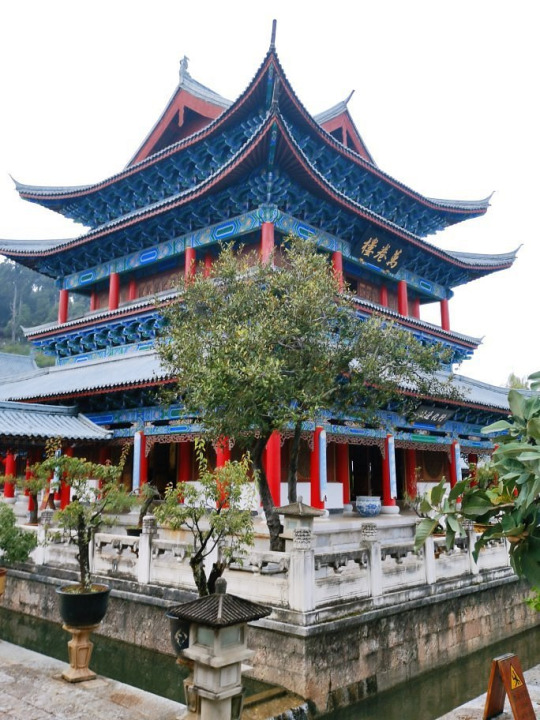
Finally, a build that doesn’t really fit the topic of this blog, but personally I really liked it, and just in time for October...
Devil Island (恶魔岛)
undefined
youtube
The cathedral in this build is based on Duomo di Milano.
#epicwork china#minecraft builds#the thousand year capital city Luoyang#the garden of gardens The Old Summer Palace#the ancient mystic city Lijiang#devil island#luoyang#the old summer palace#lijiang#old town of lijiang#chinese architecture#gothic architecture#chinese history#chinese culture#minecraft#yuanmingyuan#Youtube
157 notes
·
View notes
Text
“Night of the Fifteenth of the Eighth Month” (八月十五夜) Translation
(Another Mid-Autumn Festival, happy Mooncake Day to all! This post is a bit late but considering how swamped I am with work and life, it’s a miracle I remembered to post here lol....anyway please enjoy!)
Night of the Fifteenth of the Eighth Month (1)
By Yin Wengui (Tang dynasty, 9th century-early 10th century)
Cloudless clear heavens a mirror over the land (2),
Most perfect time for reunions (3) is Mid-Autumn.
Moonlight clinging to my garments a frosty iridescence,
And over the earth an aqueous brillance ready to flow.
Mountainous shadows in the distance chilly with dew,
Raging winds over yonder capping the waves with white.
Since you (4) illuminated my heart’s true thoughts,
The anxious man may have a carefree eve.
—————————-
Notes:
Mid-Autumn Festival falls on the fifteeth day of the eighth month in the lunar calender.
“The land” here is “九州” (Pinyin: jiu3 zhou1) in Chinese, which literally means “nine provinces”. This is a reference to the nine original provinces that were said to make up ancient China pre-Warring States. Since the Warring States period (476-221 BC), the term “jiuzhou” is taken to mean “all of China”, hence my translation of “the land”. Synonyms include 神州/Shenzhou and 中土/Zhongtu. Not to be confused with the Japanese Kyushu, since Kyushu refers to a specific island within Japan, and Jiuzhou is a broad term for the entirety of China.
Reunion here is “团圆/團圓 ” (Pinyin: tuan2 yuan2) in Chinese, where both characters in the word denote “roundness”, and the full moon on the night of the festival is also round. This is partly why the Mid-Autumn Festival is regarded as a holiday for family and friend gatherings.
Here “you” can be interpreted to mean either the moon or a person.
—————————-
Original Text (Traditional Chinese):
《 八月十五夜 》
[唐] 殷文圭
萬里無雲鏡九州,最團圓夜是中秋。
滿衣冰彩拂不落,遍地水光凝欲流。
華嶽影寒清露掌,海門風急白潮頭。
因君照我丹心事,減得愁人一夕愁。
#my translation#Night of the Fifteenth of the Eighth Month#chinese poetry#poetry#mid autumn festival#midautumnfestival#happy mid autumn festival#八月十五夜#殷文圭#中秋节#中秋节快乐
119 notes
·
View notes
Note
Hi! I loved your post about the Daoist elements in CQL. Would you mind providing a few sources where I could read more about Daoism and Chinese history in general? Thanks!
Thank you! I’m glad you enjoyed my posts! Also apologies for the late reply, life has officially caught up with me, but don’t worry, I have not forgotten lol.
About sources, I myself cannot claim to be an expert on any of this, I am just a hobbyist who happens to know both Chinese and English pretty well due to growing up in both China and NA, so I will just be speaking from my own very amateur experience doing research on these subjects and share a few of the sources I have used so far:
To be very honest, there aren’t many good sources on Chinese history in English, due to the vast majority of historical texts having no English translation whatsoever, and the English publications on the subject are usually very academic in nature. In light of this, Wikipedia may be of some help here, as it does have some good general articles in English on Chinese history from prehistorical cultures to imperial era history, but it being Wikipedia, the articles are best used as general references only. From personal experience, even if you do know Chinese, searching online for credible sources is usually a pain, as most things reiterated online are usually either modern misconceptions, legends, folk tales, or some mixture of the three. It’s a little bit like how there are many misconceptions of Medieval European history. If you do know Chinese rather well, I would suggest looking up and reading primary sources on archaeological findings (in my amateur opinion the best source for anything pre-Zhou dynasty), as well as historical texts, such as the Twenty-Four Histories (widely considered the “main”/“orthodox” sources for a general timeline from Zhou dynasty to Ming dynasty). All 24 are available on Wikisource for free, but of course, they are all in Classical Chinese, which is rather difficult to understand, even for native speakers; adding to it is the fact that none of them are organized in overall chronological order, and are more focused on notable individuals who lived during a certain period of time. Also, I will caution that although the Twenty-Four Histories were written as reference works, they were not 100% factual, because people back then did not have the amount of information available to them as we do today, and certain things were recorded in a subjective manner, though these texts do give a good general idea of the time periods.
The difficulties with finding good sources on Daoism is a little different, because you may be able to find good ones, depending on what type of source you are looking for. Most English sources online are again, very academic-oriented, and more focused on the philosophical aspects than the religious. This means that most of them were written in an analytical fashion, from a more objective and removed viewpoint. Such sources are very easy to find online, and two that I can think of off the top of my head are Stanford Encyclopedia of Philosophy (link provided here is not the only article they have on Daoism), and Internet Encyclopedia of Philosophy. If you are interested in reading primary sources, the Dao De Jing and Zhuangzi are considered two of the most important foundational texts for philosophical Daoism, and there are many different English translations for each. In fact, you may be able to find some at your local library. As for religious Daoism, since it is very much a cultural thing (this applies to both philosophical and religious Daoism, but is particularly true for religious Daoism), my opinion is that it is better to look for sources that are more “involved” in the practice of Daoism, as I believe immersion is key to a more complete understanding of culture-related subjects. These sources, of course, are much much harder to find in English, and it’s understandable, since there aren’t many native English speakers who are also practicing Daoists. Therefore knowing Chinese will drastically decrease the difficulty of finding credible sources, though to be honest they are a bit scattered about. If you know Chinese well and really want a deep dive into religious Daoism, here’s the Wikisource link for most of the Daoist Canon in Chinese, or you can look up sources about the Daoist Canon for more general information.
So in conclusion (or “tl;dr” I guess, haha), it is really really difficult to find good sources in English that one can do a leisurely reading on, and still come away with a good general idea of the topic. Even when searching online in both languages, one has to be on the lookout for all sorts of “noise”, but sometimes there are gems to be found as well, and because of this mixed nature, I won’t be providing many links here, just a general direction. To be honest, the severe lack of non-academic English sources is one of the main reasons why I started this blog. The process of doing the research, parsing the information to find what is true by checking them against primary sources, and then presenting them in a more easily digestible form is as much for the blog as it is a learning experience for myself, which is something I thoroughly enjoyed.
135 notes
·
View notes
Text
Happy Lunar New Year everyone!
I am still at work, and has been very busy with a lot of work and life things, so I have not been able to prepare a post beforehand, but a post about some of the traditions surrounding Lunar New Year will be coming soon, stay tuned!
7 notes
·
View notes
Note
Hello! I am making several long form analysis videos of The Untamed can I use certain posts from your blog? I'll be sure to credit you and everything! If not, I understand.
That's totally fine! I really appreciate it! :D
5 notes
·
View notes
Text
“Moonless Mid-Autumn” (壹剪梅·中秋無月) Translation
(It’s been almost 9 months, and a lot has happened, but I’m finally back! And just in time for Mid Autumn again. Happy Mid-Autumn Festival!)
Moonless Mid-Autumn
By Xin Qiji (Song dynasty, 12th century)
Recalling one Mid-Autumn spent opposite osmanthus blooms,
My liquor reflecting the flowers, the moon.
Tonight I sit at the same place expecting the same moon,
Yet the window is damp from clouds, wet with rain.
Wishing I could soar up to confront the gods in heaven,
But alas, the journey is difficult for a message, let alone me.
With only rosy candlelight to ease the gloom,
Let us drink our fill, sing to our heart’s content.

—————————-
Original Text (Traditional Chinese):
《壹剪梅·中秋無月》
[宋] 辛棄疾
憶對中秋丹桂叢,花也杯中,月也杯中。今宵樓上壹尊同,雲濕紗窗,雨濕紗窗。
渾欲乘風問化工,路也難通,信也難通。滿堂唯有燭花紅,歌且從容,杯且從容。
#my translation#chinese poem#poetry#mid autumn festival#midautumnfestival#moonless mid autumn#中秋无月#辛弃疾
247 notes
·
View notes
Note
Hi there! I'm a fan of The Untamed/MDZS, and I really enjoyed your post about the Daoist elements and stuff in the show, so I hope you don't mind me popping in out of the blue to ask you a random question-- please feel free to ignore it! I've been trying to find info on Sects in general-- how they're founded, how disciples are chosen/accepted, etc. but I'm having a really hard time finding any. Would you happen to know where I could learn more about the mechanics/day-to-day stuff of sects?
Sorry I'm a bit late, and thank you @nerd-bastard , I really appreciate it!
About the daily life and initiation process into sects....I'm assuming you mean real life religious Daoism? I personally am not very knowledgeable about religious Daoism, particularly the aspects concerning rituals, I only know about some of the basic concepts (since the basic texts are readily available online or in libraries). Unfortunately, due to historical circumstances, religious Daoism isn't very big now, though it is making a comeback in recent years. For that reason, there aren't many reliable resources readily available, and those that are are probably going to be in Chinese. I did find this site and it is in English, but the info it gives seems to be a mix of the basic concepts of Daoism and some Daoist culture tidbits, such as music used in rituals. Since I can't post a link here (lol tumblr problems), I'll just give you the website name so you can look it up: Daoist Gate
The Daoism page gives some cool facts, though it isn't very extensive in my opinion. It does give several links to other websites about Daoism though.
Hope this helps! :)
43 notes
·
View notes
Text
Yup I tried using the "no need to study" charm and it worked! Jk.
But I did just finish a midterm and am pretty tired, so although I'm have half the post done, I'm going to get some sleep first lol.....and since it's the start of a new week, I'm aiming for Thursday or Friday to hit post. Sorry to keep all of you waiting. I really didn't expect to get so much love for those two posts, and I really appreciate it.
Spoilers for the next Daoism and MDZS related post: the individual journeys of WWX and LWJ, and how they relate to the concepts of "entering society" (入世) and "exiting society" (出世).
34 notes
·
View notes
Text
Random Stuff #10: Daoist Elements and More in The Untamed/MDZS Part 2 - Weapons and Magical Objects
(Part 1 Here) (Super-long post ahead!)
Talismans/Charms/符箓/符咒


The talismans in both the live-action and animated shows originate from Daoist talismans, which in turn developed from early shamanistic traditions. Like what Lan Wangji tells Jiang Cheng in the show, real life Daoist talismans are usually made for beneficial purposes, one of which being to ward off evil spirits. Other purposes of such talismans include everything from curing illnesses to controlling floods to communicating with the gods. In order to call forth gods to accomplish these goals, writing/drawing on the talismans usually include “incantations” that start with “勅令”, or “command”, on the very top. The word can be traced back to 敕令, which refers to orders from an emperor, but since 敕 is traditionally reserved for the emperor, Daoists use 勅 on their talismans. The meaning is also slightly changed, as 敕 has 攵 on the right, implying the order is written; meanwhile 勅 has 力/force on the right, implying the order is executed by “force”.
The body of the talisman sometimes include complex combinations of Chinese characters (合体字/複文) that are more like visual symbols and do not have their own pronunciations. On a talisman these “combination characters” are usually arranged in a specific pattern. These combination characters aren’t exclusive to Daoism, however. Below is a well-known combination character created from the word 招財進寶 (lit: “gaining wealth and attracting riches”), commonly seen pasted on doors and windows around Chinese New Year for luck.
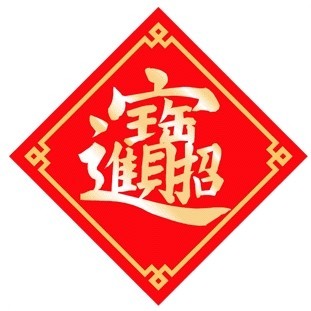
Other elements of a talisman are mostly made up of symbols such as the yinyang symbol, eight trigrams, and special strokes that also hold symbolic meaning.
A fun detail from the animated show: in the scene where Jiang Cheng shows the inverted evil-warding talisman to Lan Wangji, we can see that WWX’s addition in blood near the top turns the 人 part into 夷, as in 夷陵老祖/”Yiling Founder”, giving the viewer a solid hint as to who changed the talismans.

Sword (Jian)/剑
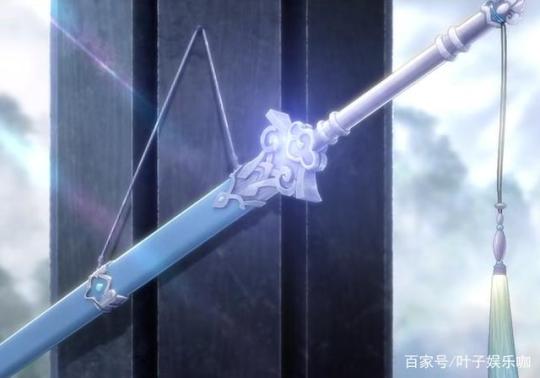
Jian sword refers specifically to pointed double-edged one-handed straight swords. The sword is important to religious Daoism, but its origin as a culturally-significant symbol lies in history.
The sword was an actual weapon used on the battlefield before Han dynasty (before 202 BC), and it was that time, long long ago, that the sword was associated with certain human qualities, such as an unyielding sense of justice. From there, the jian sword eventually became an ornamental item symbolizing high social status. Evidences of this can be found in the Book of Rites (《禮記》), a book detailing etiquettes and rituals for nobles of Zhou dynasty (1046-256 BC). For example, a chapter mentioned “when looking upon a gentleman’s attire, sword, and carriage horse, do not gossip about their value” (“觀君子之衣服,服劍,乘馬,弗賈”). One such decorative jian sword artifact even survived to this day:

Sword of Goujian, King of Yue (越王勾践剑), part of the collection of Hubei Provincial Museum. Note: the engraved “bird-worm seal script” (鳥蟲篆; basically a highly decorative font) text says “Goujian, King of Yue, made this sword for his personal use” (戉王鸠浅,自乍用鐱).
By the Eastern Han dynasty (25-220 AD), Daoism had established itself as a folk religion. Many of the customs and etiquettes passed down from pre-Qin dynasty times were mystified and given religious importance in the then newly-established Daoist belief system, including the aforementioned etiquettes involving the jian sword. People came to believe the jian sword as holding magical properties, a weapon gifted by heaven itself, allowing its wielder (usually a Daoist priest) to fight and triumph over demonic spirits. As the jian sword became more and more of a Daoist ceremonial item than an actual weapon, it also slowly changed to this familiar form today:
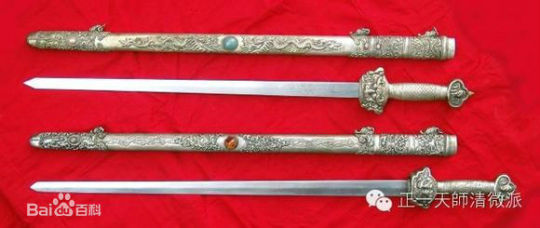
(Modern ceremonial Daoist jian swords. Fun fact: it is widely believed that jian swords made entirely of peach wood have better demon-banishing abilities than regular swords, since peach trees were said to have demon-warding effects.)
So, a sword that was worn to show respect, used to showcase social status AND have demon-warding powers? Does that sound familiar?
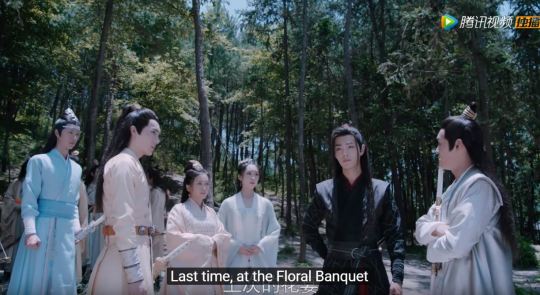





It was no accident that the day WWX refused to take his sword with him (since he gave his core to Jiang Cheng so Jiang Cheng could continue to use swords) was also the day the other sects/clans started to alienate him. The sword symbolized status, and WWX was only the son of a servant, a “lone genius” (一枝独秀/”a lone blooming branch”, in the words of Jiang Cheng) among all the young nobles, so it was fitting that WWX abandoned the “righteous” sword path to walk a new and unique path in order to reach his full potential.
“Fly whisk”/“duster”/fu chen/拂尘
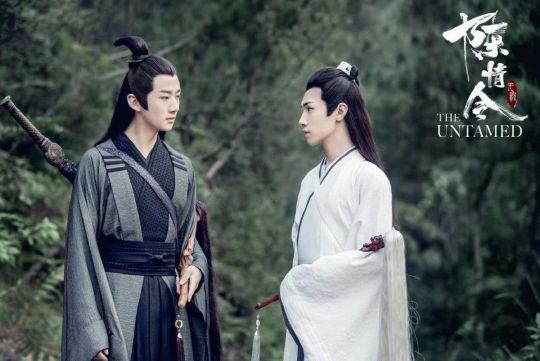
Remember the funny-looking duster-like objects that Song Lan and Xiao Xingchen held in the live action series? Those are called fu chen, or “拂尘” in Chinese, and hold symbolic meaning in Daoism. To explore that meaning, let’s first explain the name “fu chen”. Fu chen literally means “brush dust”, so the Chinese meaning is really more like “duster” than the common English translation of “fly whisk”. But then what sort of “dust” is it really “brushing”?
The concept of “dust” (尘) in both Daoism and Chinese Buddhism refers to the normal secular human society, with all of its material objects and worldly wants and worries. Thus, the symbolic meaning of fu chen/“duster” is to clear these worries and wants--in other words, worldly attachments--from one’s mind, allowing one to exit the secular world. For this reason, in China, the process of abandoning one’s normal life in society for the life of a Daoist priest or Buddhist monk is called “出家” (lit. “exiting home”) or “出世” (lit. “exiting world”; world here meaning society).
Since both Song Lan and Xiao Xingchen are Daoist priests (they were both referred to as “道长”), and both wandered through the world banishing evil rather than settling down somewhere and integrating into society, it was a nice choice to have them each hold a fu chen.
"Stygian Tiger Seal" or “Yin Tiger Seal”/阴虎符

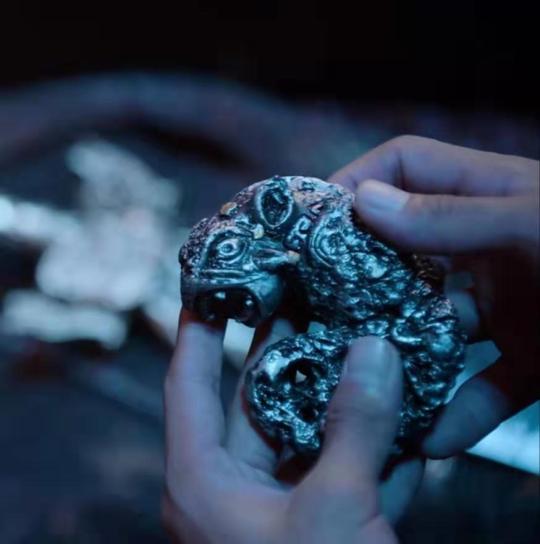
This one is a non-Daoist reference, but it’s still rooted in Chinese history, so here we go.
The fact that the Stygian Tiger seal is called a “tiger seal”/虎符 and has two halves that unleash powerful resentment energy when fitted together (this mechanism is present in both book and live-action but is absent in the animated show, where the two halves appear to be conjoined), points to the inspiration being the tiger amulet. In imperial China, tiger amulets/虎符 are metal tiger figurines that split into halves lengthwise, and serve the important purpose of approving military deployment. The imperial court would hold the right half, while the left half would be issued to military officials.
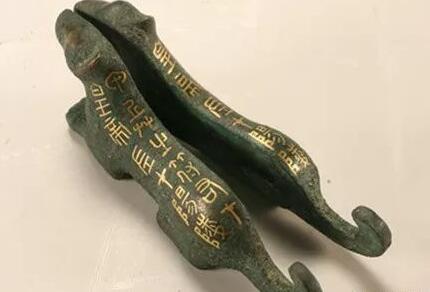
When army deployment is needed, the official would bring the left half of the figurine to the imperial court, and if it combines with the right half into a whole figurine, then the military deployment would be officially approved. Historically, tiger amulets are a security measure designed to give the imperial court control over the military.
Finally, some joke talismans I found on the web:

Translation: “No need to work overtime”; “hold the talisman and chant ‘PIKA PIKA’”, “will confuse your boss so you can get off work early”.

Translation: “passes exam without studying”, “bullshitting it”, “no need to study”. (I think I’ll need one of these lol................................)
3K notes
·
View notes
Text
Random Stuff #9: Daoist Elements and More in The Untamed/MDZS Part 1 - Concepts
(Part 2 Here) (Super-long post ahead!)
Though The Untamed is a Xianxia/仙侠 drama (kind of like fantasy genre), there are some elements in it that had clear roots in Chinese culture, especially religious/philosophical Daoism. So here are some Daoist elements within the world of The Untamed/MDZS:
“Cultivation” (Dao)/道
In Chinese, the “cultivation method” is the “Dao”/“道”, which some of you may recognize as that character that sometimes stands for Daoism. Within Daoism however, that character has a deeper meaning than just a name; in fact it is one of the most important concepts of both philosophical and religious Daoism (it also has a few different meanings, but the world of The Untamed mostly focuses on one of them; Stanford Encyclopedia of Philosophy has a very comprehensive article entry on Daoism that explains the concept of Dao in detail, for anyone who’s interested in more scholarly explanations). It actually translates best as “way” or “path” (note: when not referring to a specific “way”, it absolutely CANNOT be translated as “the way” or “the path”, and I will get to why that’s important), and basically means a “way” of doing something. For example, to make a salad you might rip the lettuce leaves or cut them with a knife. Both of these methods would be “ways”/道 of making a salad. And as you can see in this example, there are many different ways of arriving at a result or accomplishing a goal. Since Dao encompasses all of the different ways of doing all the different things, it cannot be translated as “the way”, since “the” would imply that “there is only one way”, or “only one right way”, of doing things.

(image credit: My Great Lakes)
This concept that there is more than one way to accomplish something is very important to the story of The Untamed/MDZS, especially in terms of Wei Wuxian. But we have to clarify the “goal” in The Untamed/MDZS first: what was it that these people were trying to accomplish with their different “ways”? Looking at the overall story, it appears that they were all generally trying to do good and uphold justice by warding off or neutralizing supernatural threats. Now that we’ve established the goal, let’s return to WWX. In the story, WWX was forced to give up the regular “cultivation”/ the “sword path”/剑道, instead founding the “demonic cultivation”/”dark path”/魔道 in order to survive the extreme environment of the Burial Mounds and acquire enough power to get revenge on the Wens. Since the Wens killed a lot of people, WWX would also be upholding justice by punishing them for their evil deeds. As the lyrics of the opening song of MDZS animated series puts it: “though his (WWX’s) ‘path’ was different, there was justice within his heart” (道不同义在心中). Conversely, this is also why the sects/clans were wrong to label different “cultivations”/“ways” as good or evil, as both WWX’s “demonic cultivation” and the regular “sword path” could be used as powerful forces for good and evil. Of course, the irony was that while the sects hailed their “sword path” as “the one right path”, they were using it to control each other, instead of using it to do good.
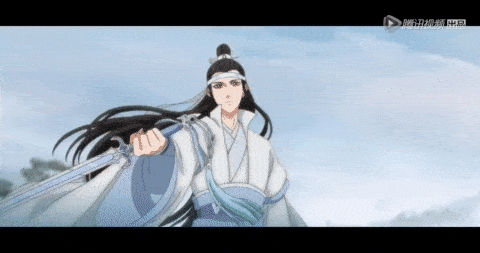

(The two “paths”/daos. How different are they?)
“Cultivation”/修道
Well now that we’ve cleared up what “cultivation”/道 or Dao actually is in the context of the show and what the characters were trying to accomplish with their different “ways”, this “cultivation” or 修道 becomes easier to understand. It means the development (修) of one’s skill in regard to the “path” (道) one has chosen. For example, most characters chose to develop their skills in the “sword path”. In actual religious Daoism, however, since the ultimate end purpose is to become an immortal/仙, 修道 would mean doing something to work towards that immortal status.
“Cultivator”/仙
In Daoism, the character “仙” can be translated as “immortal”, “sage”, or “celestial being”, and refers to the end goal of religious Daoists: to “metamorphose” into an immortal (羽化登仙) (also connotes transitioning into eternal afterlife through death). The characters “羽化” literally mean “to become feathery”, because at least in Western Han dynasty (202 BC-8 AD) figures and tomb murals, such immortals often appeared as humans with feathers or winged humans, and are capable of flight.
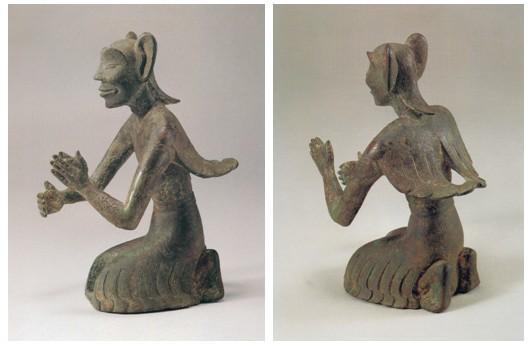
Over the next few hundred years, the appearance of immortals gradually morphed into humans that fly by floating, standing on platforms of clouds, or riding birds (often cranes)/mythical creatures.
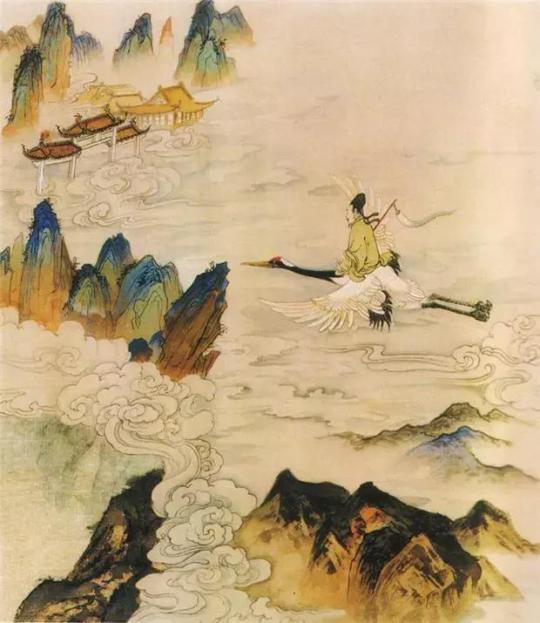
In the drama and the animated series, 仙 is often used as a descriptor in different words (ex: 仙门, 仙家, 仙侣, 仙缘...etc), rather than a standalone noun. However, it is still a reference to this general idea of training/cultivating oneself to become something greater, and provides a strong connection to Daoism.
“Cultivators”/修士
In Daoism, this term is used less than 道士, but it still means “cultivators of Dao” (修道之人), or simply, “Daoists”. In The Untamed/MDZS, of course, it means practitioners of a “cultivation”/“path”.
“Golden core”/金丹
This one has roots in real life sects of religious Daoism. The translation “golden core” itself is quite literal. “Golden” from the descriptor 金, and “core” for 丹, presumably because it looks like a sort of core. In reality, 丹 is quite hard to translate. Stanford Encyclopedia of Philosophy translates 丹 as “alchemy”, so I will use “alchemy” for 丹 from here on out. In religious Daoism, there are two types of this alchemy: external and internal, and both are supposed to help one towards immortality. People who practiced “external alchemy”/外丹 basically made “immortality elixirs” (in reality it wasn’t a drink like “elixir” implies, but a ball-shaped chewable) in the hopes that it would give immortality to whoever ate it. This is very much like alchemy in Europe, except instead of trying to turn things into gold, people were making things to eat for immortality. Some fun facts: these elixirs frequently contained heavy metals like mercury and lead, and ironically would shorten people’s lives instead of helping them live longer; also legend has it that an explosive attempt to make elixirs actually led to the invention of gunpowder.
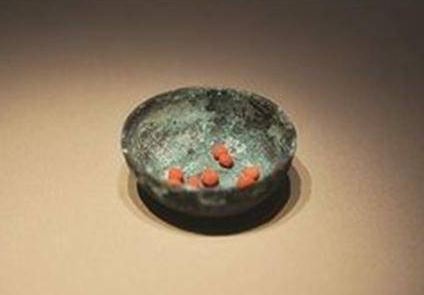
(these appears to be actual products of external alchemy found in an Eastern Jin dynasty tomb, well-preserved due to its high mercury content)
This external alchemy obviously does not apply to “golden core” in The Untamed/MDZS, so let's look at internal alchemy. “Internal alchemy”/內丹 is much more abstract than external alchemy, but in simple terms it is the practice of using meditation and similar strategies to return oneself to a state of emptiness (kind of like “one with nature”). This is probably what the show’s “golden core” was based on. Also another name for “internal alchemy”/內丹 is “golden alchemy”/金丹, literally the same characters as “golden core”/金丹 in the show.


There is one major difference though. While real practitioners of internal alchemy believe that everyone already possess a “golden alchemy” (“golden core”), in the show everyone has to “cultivate” themselves in order to have one in the first place.
1K notes
·
View notes